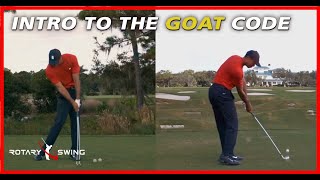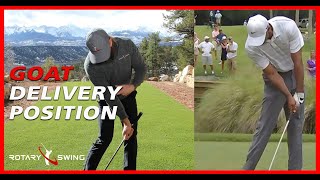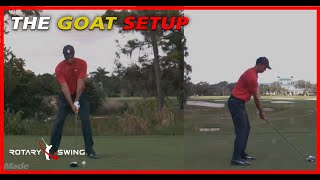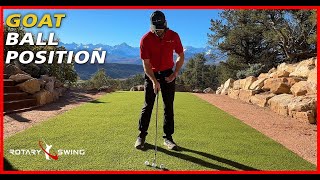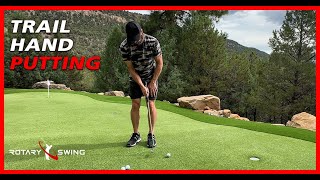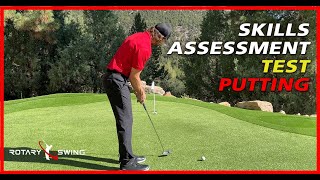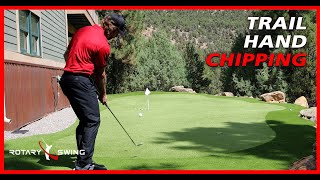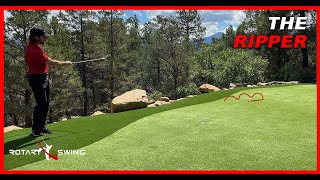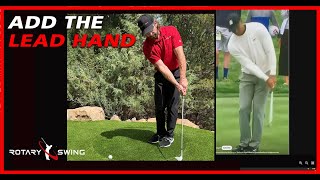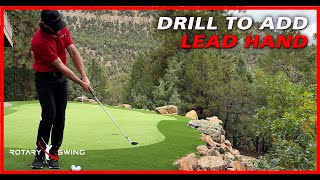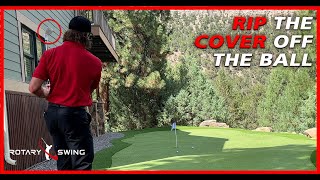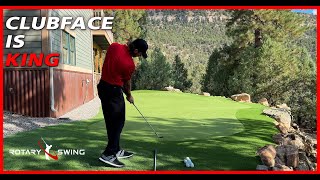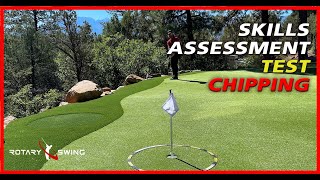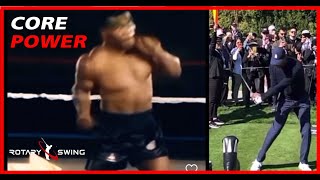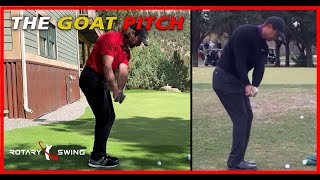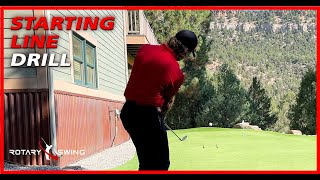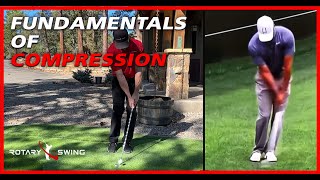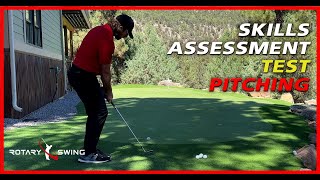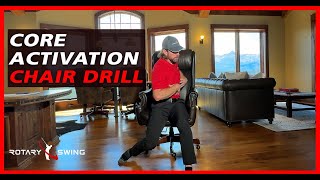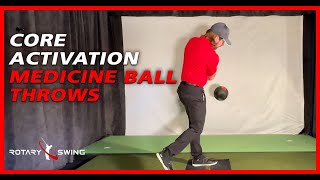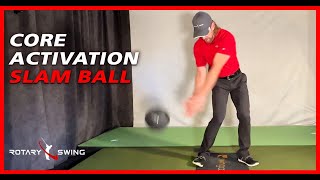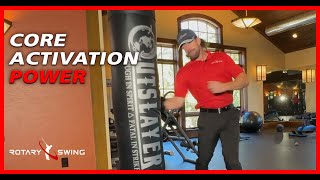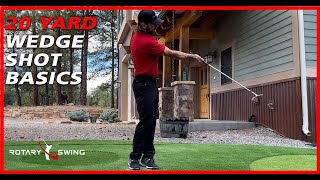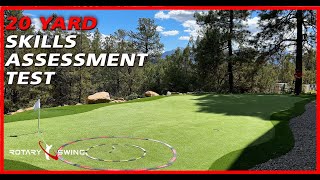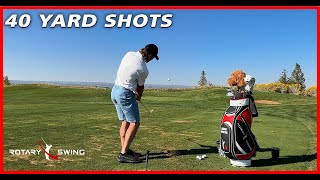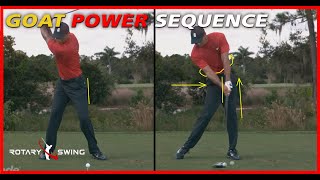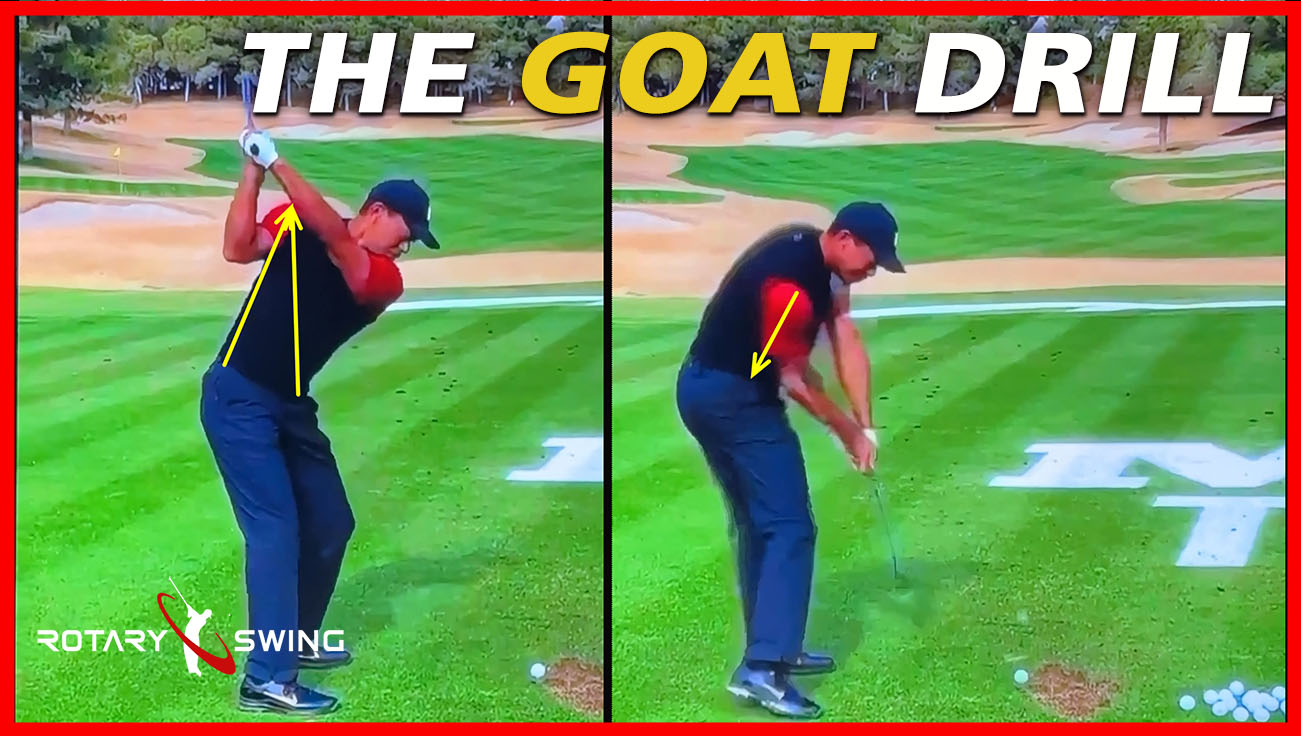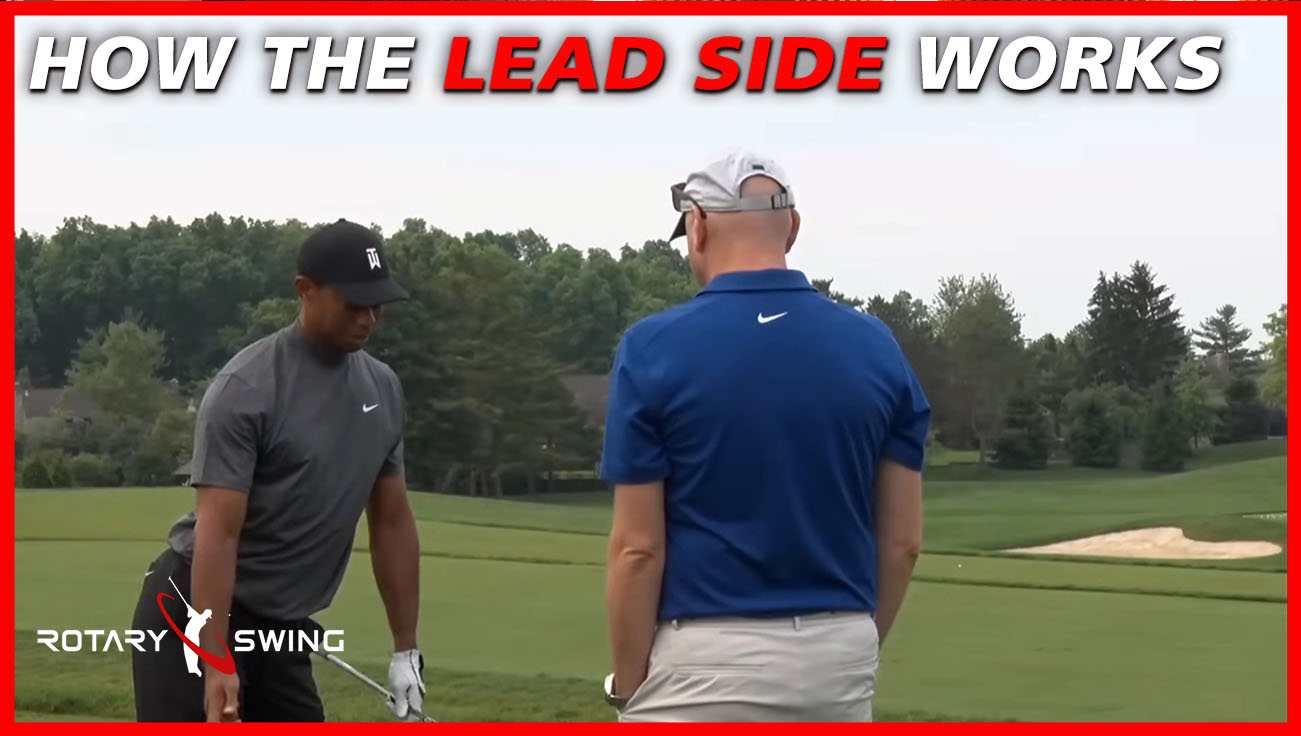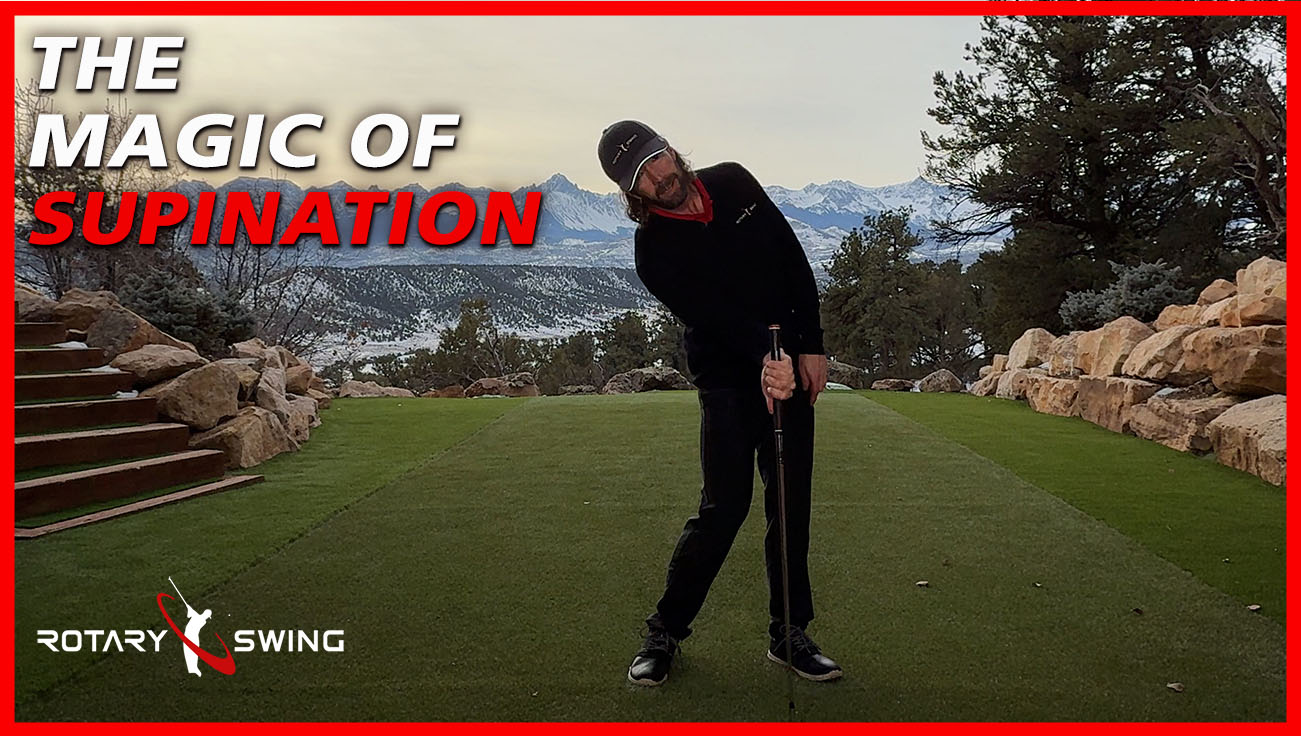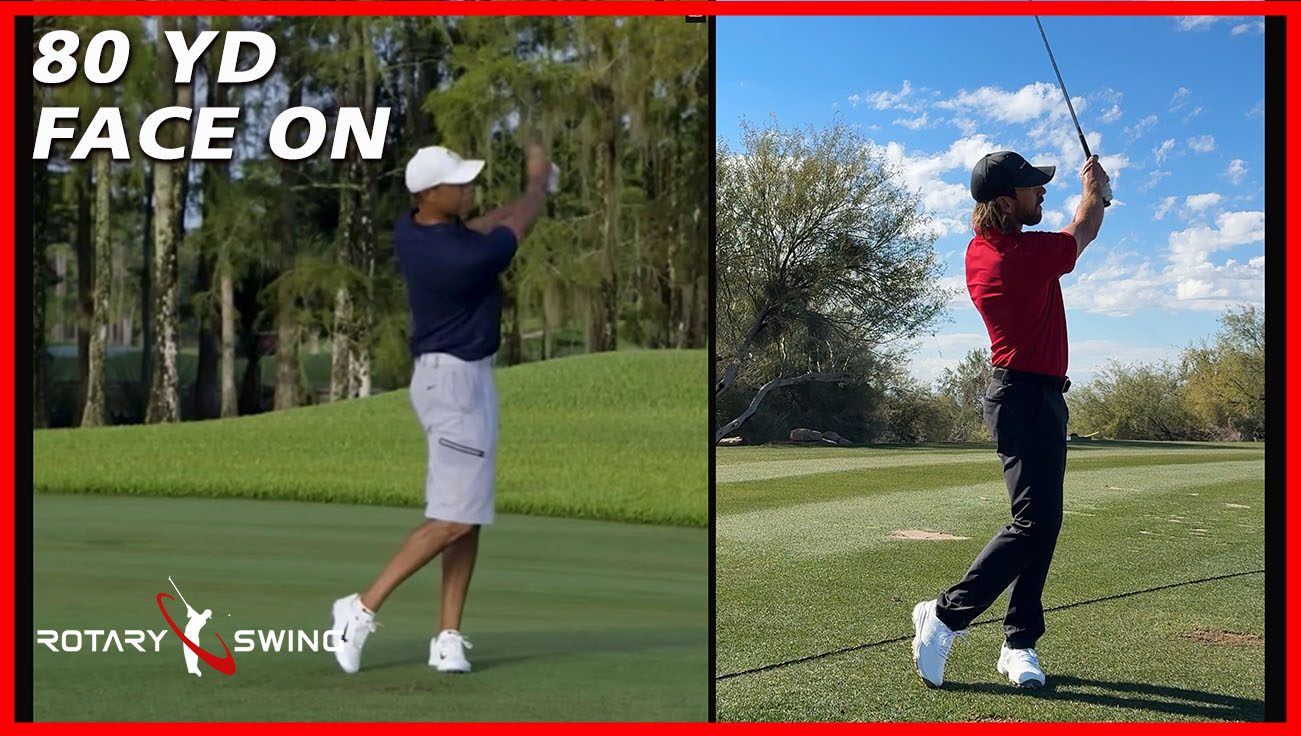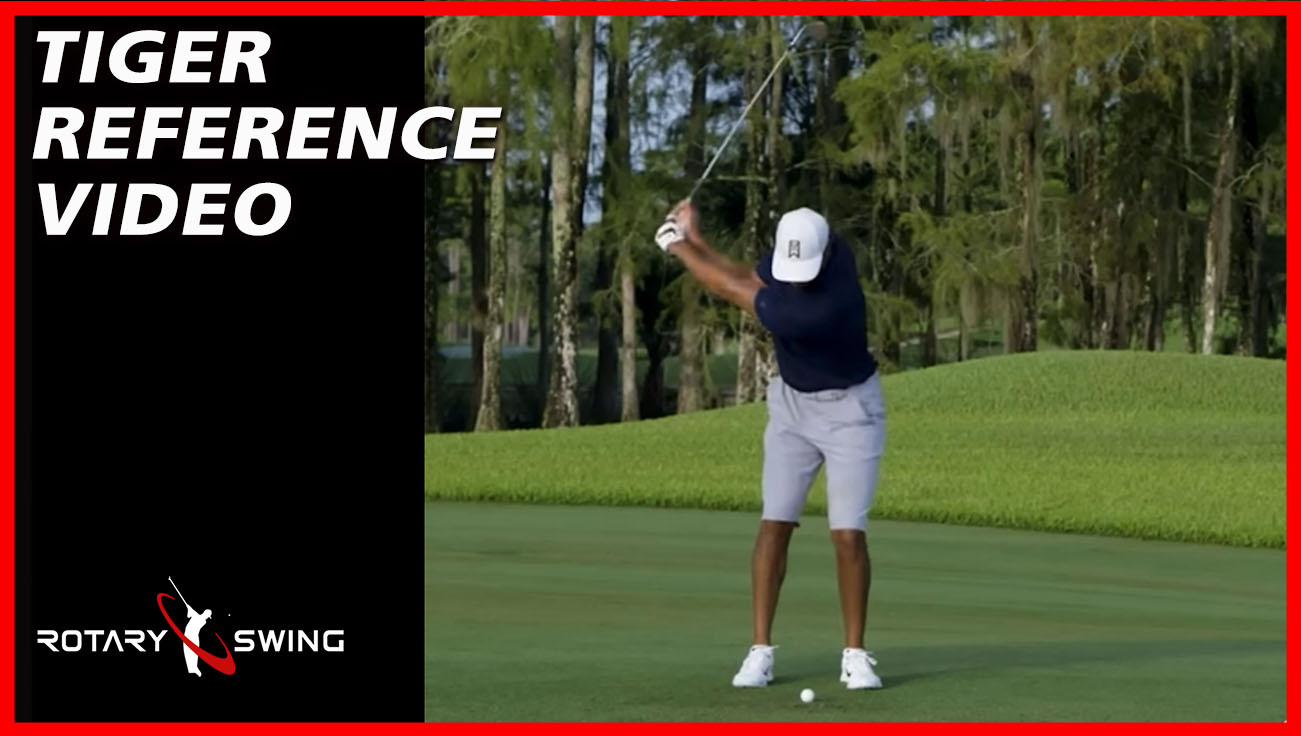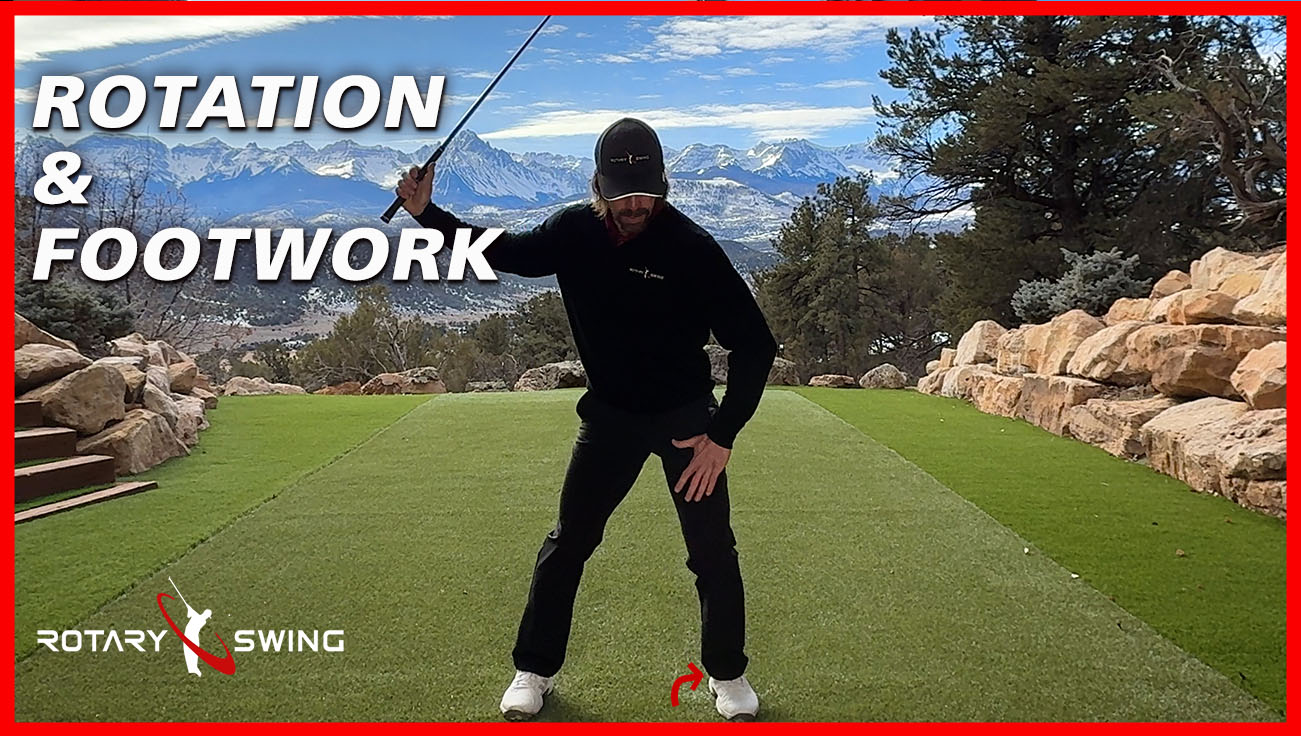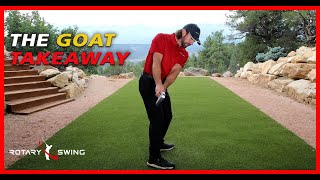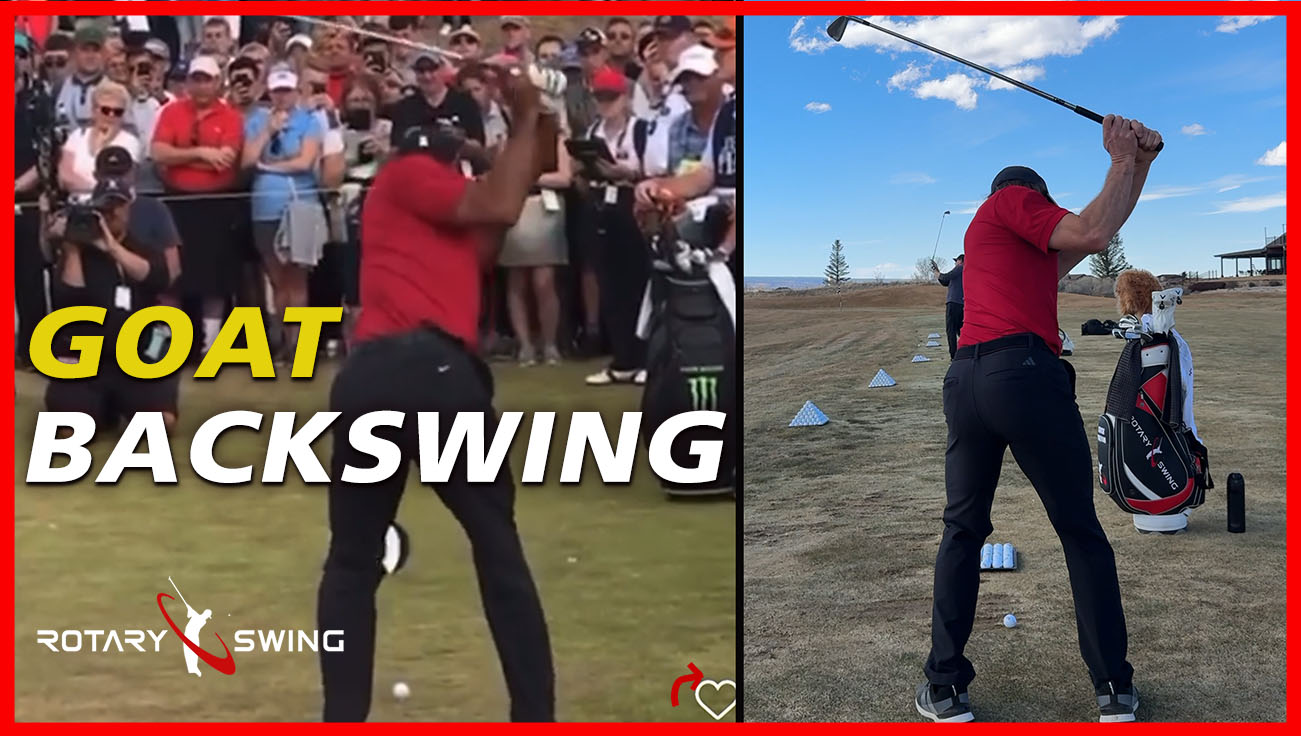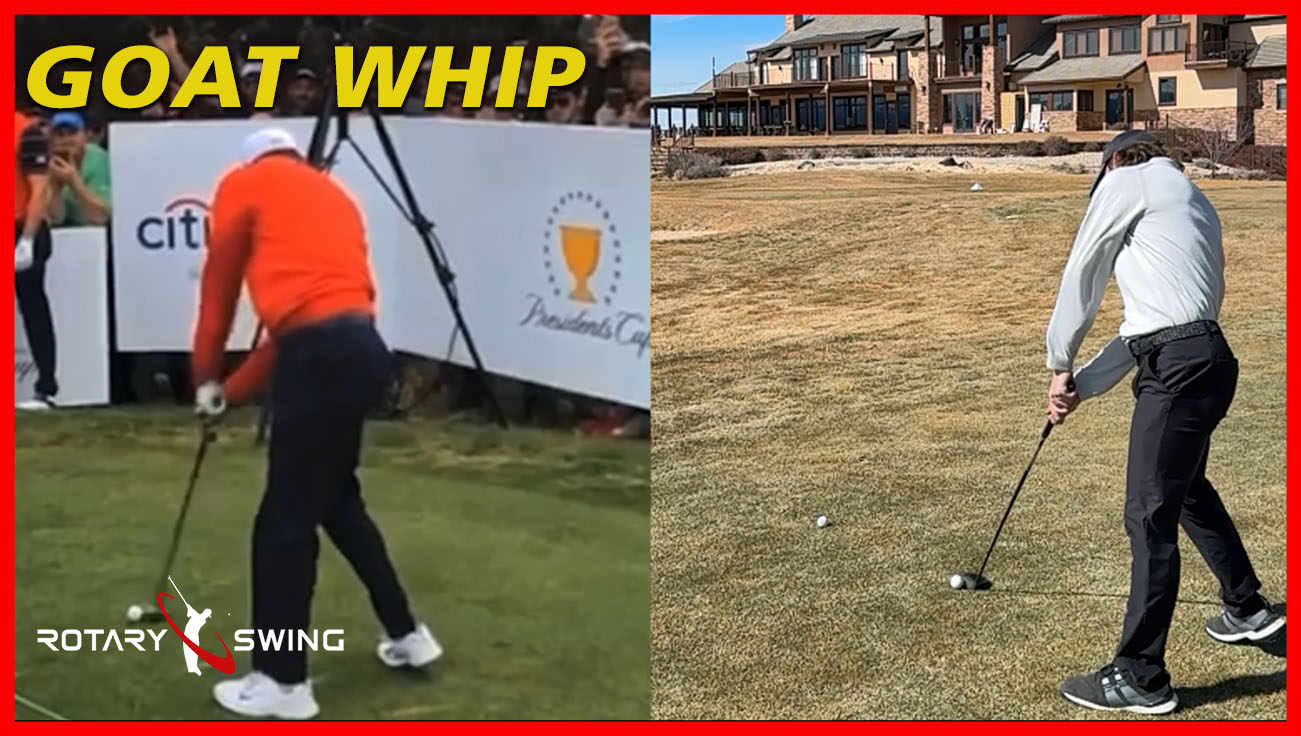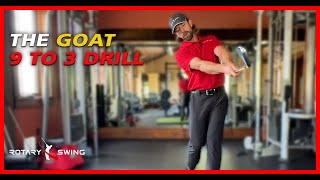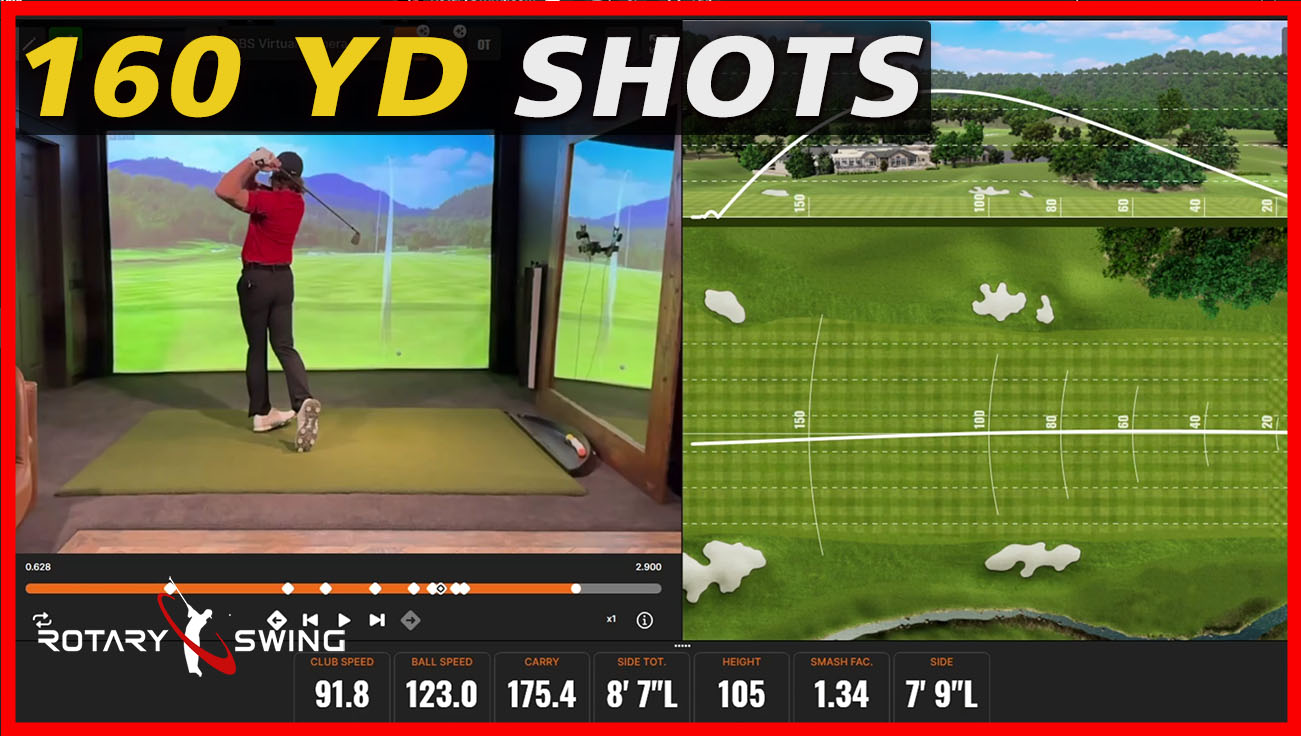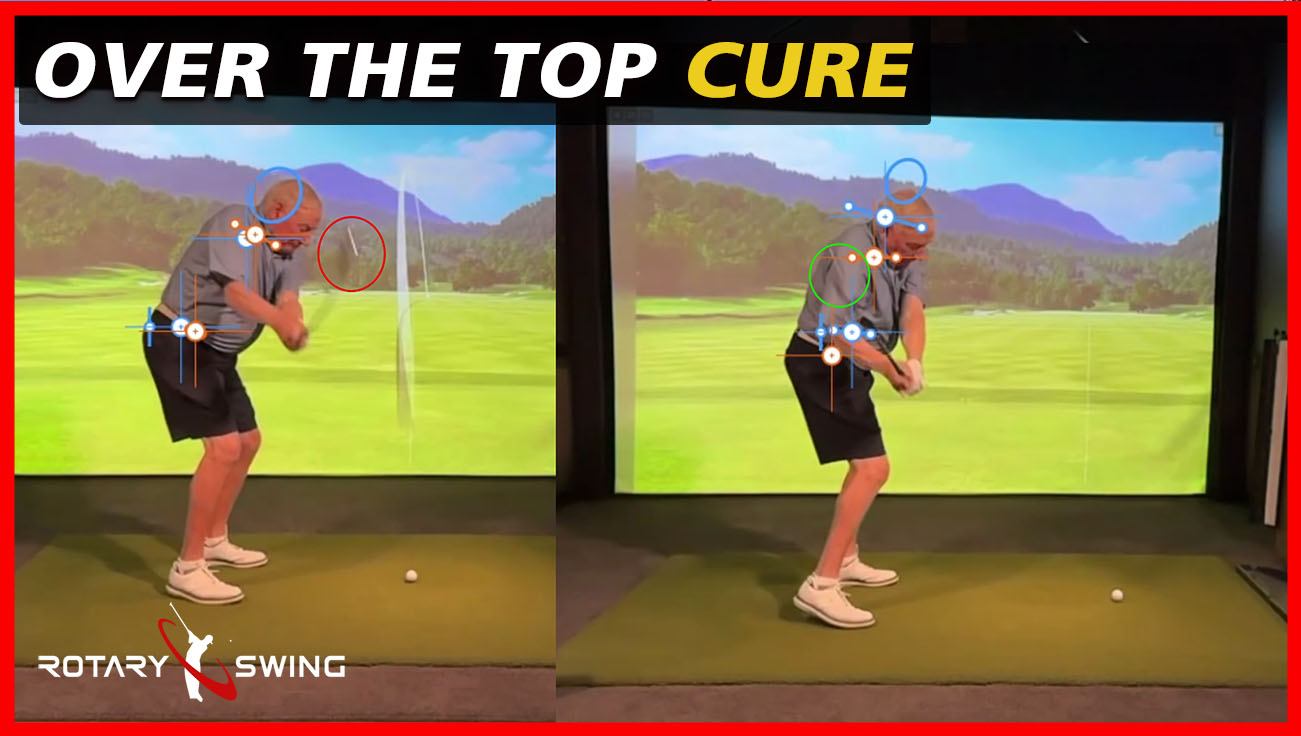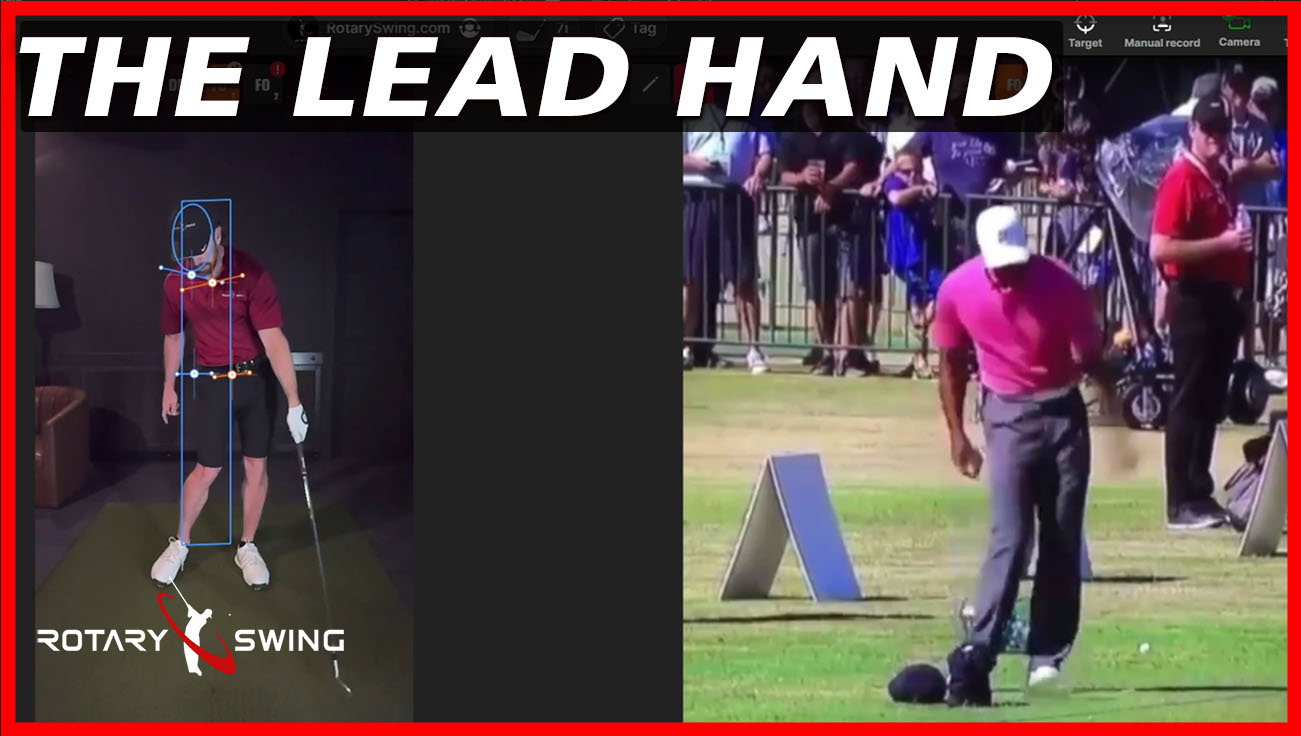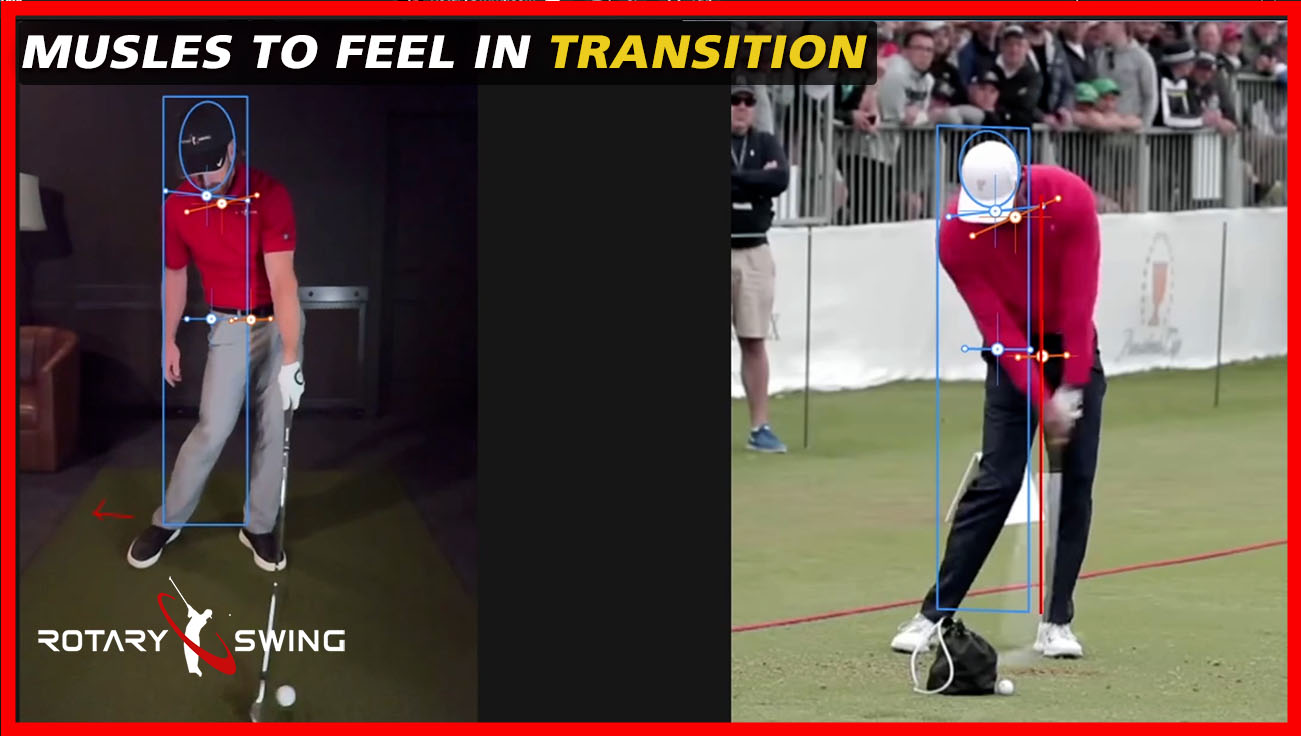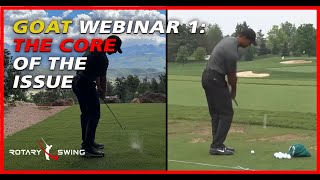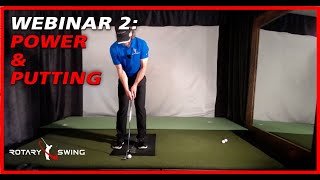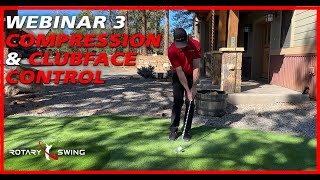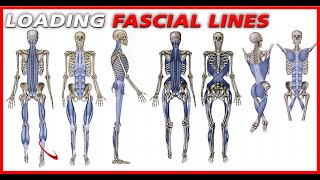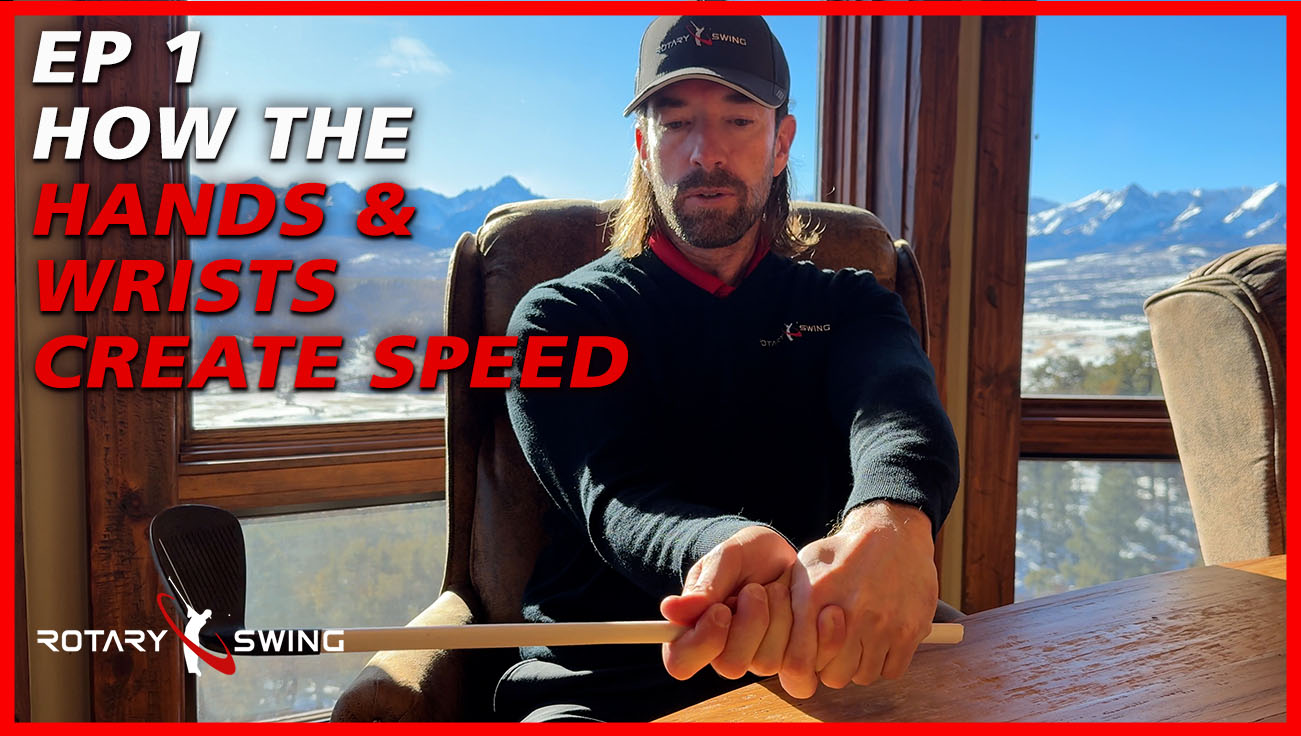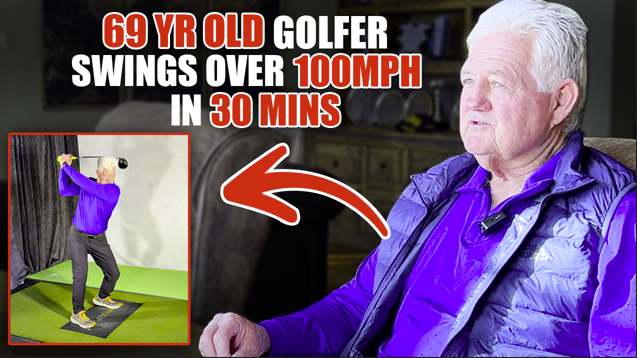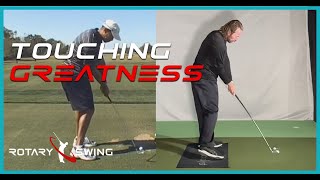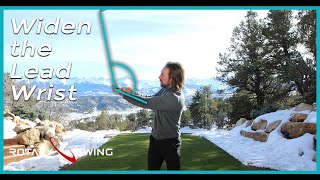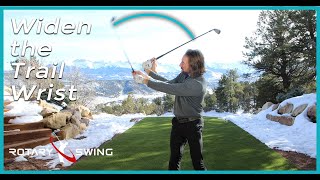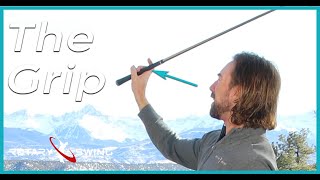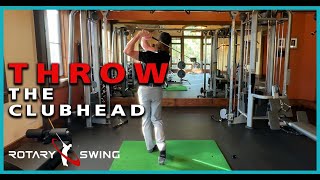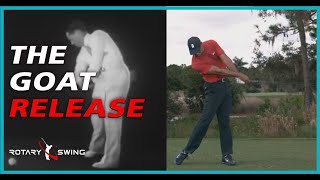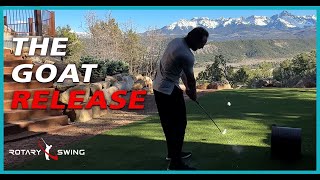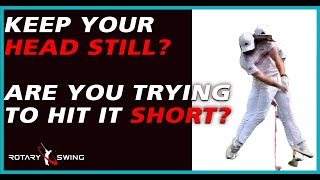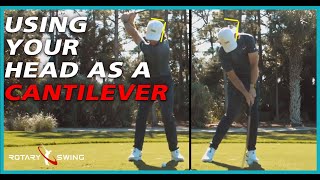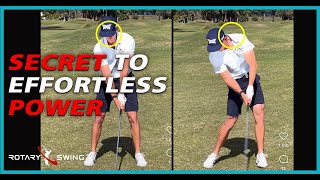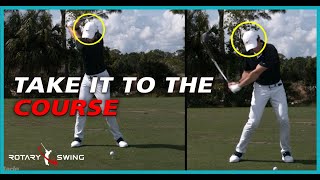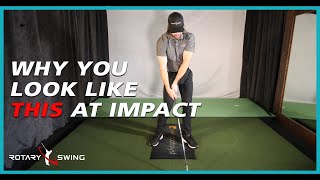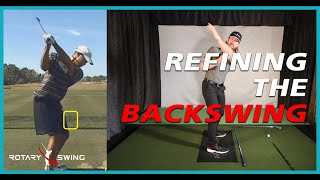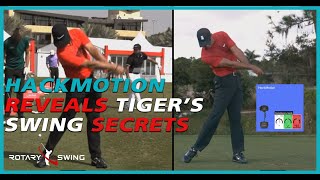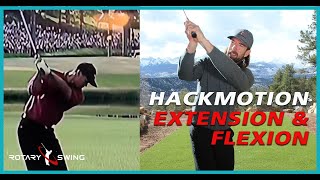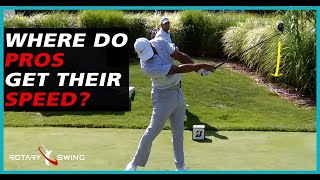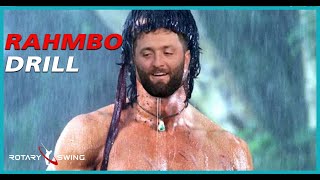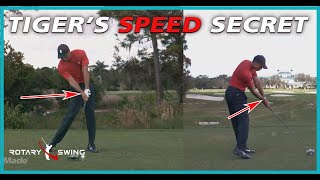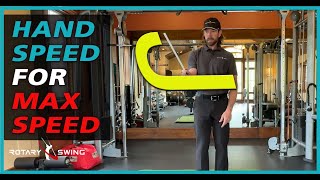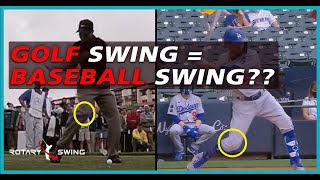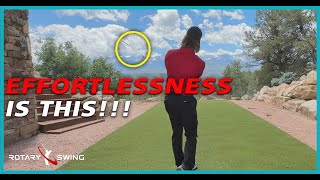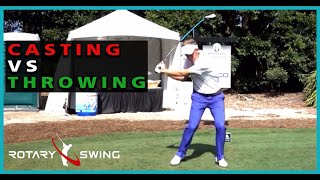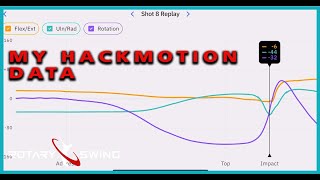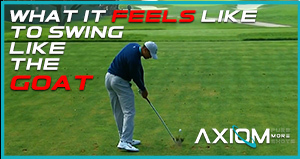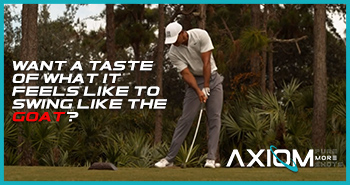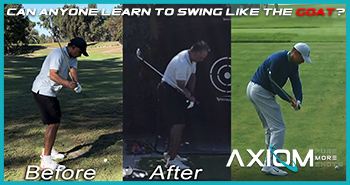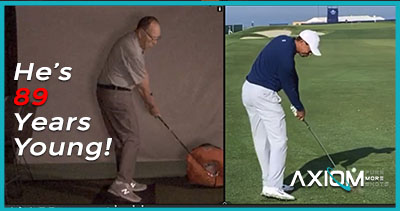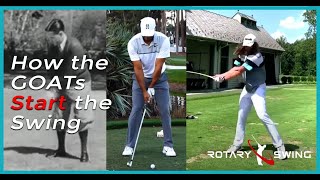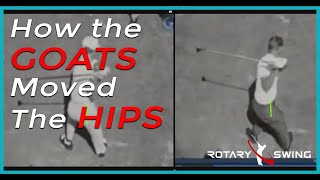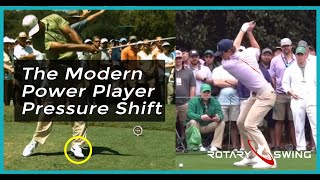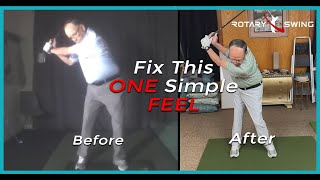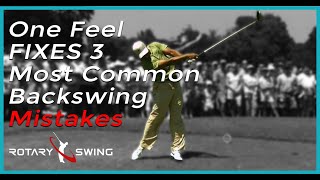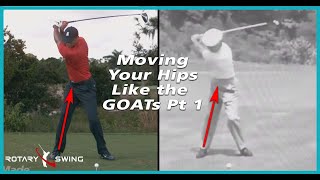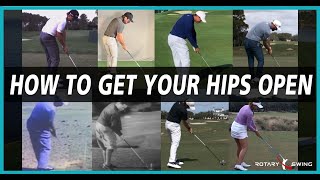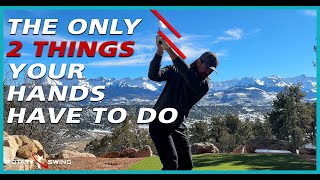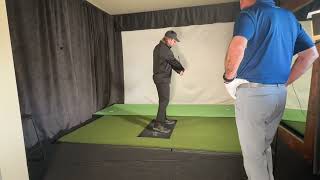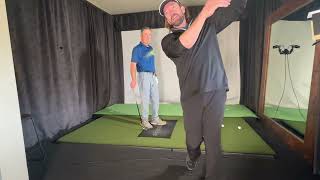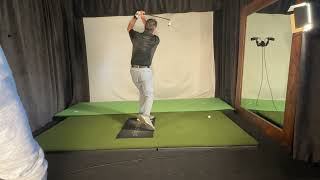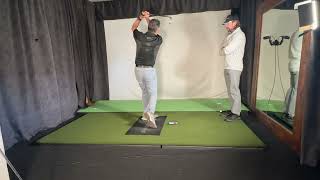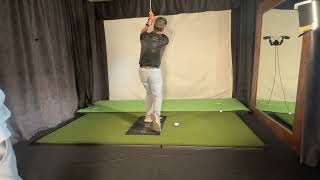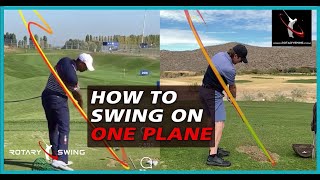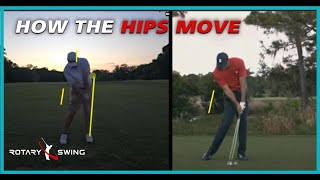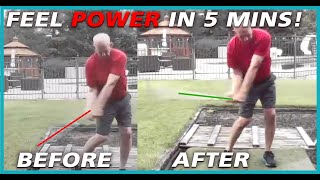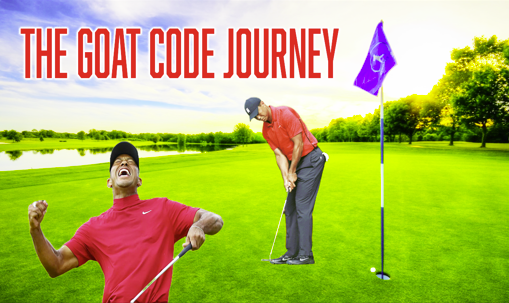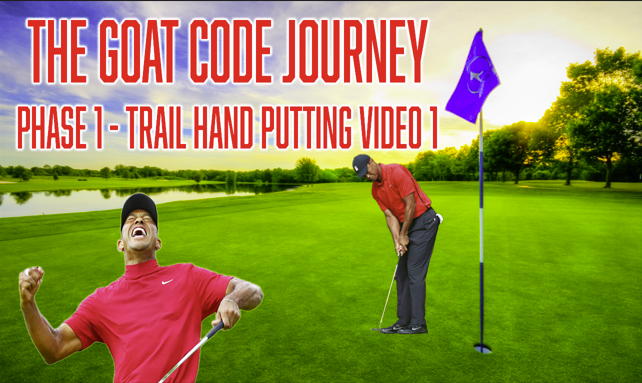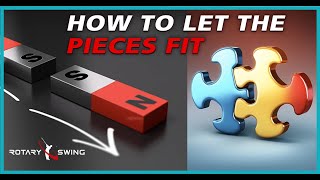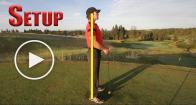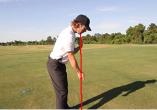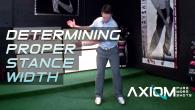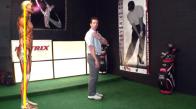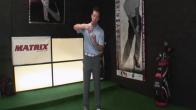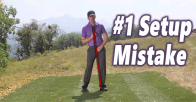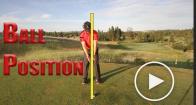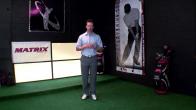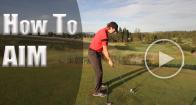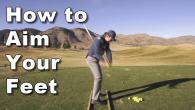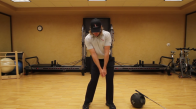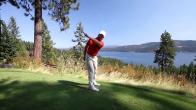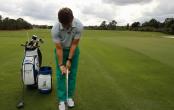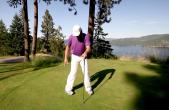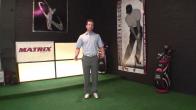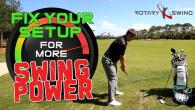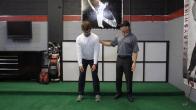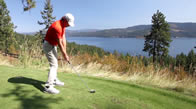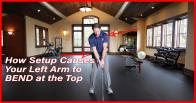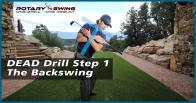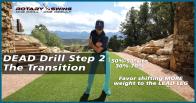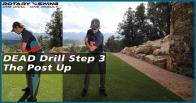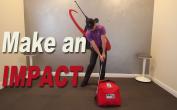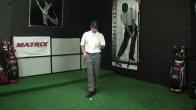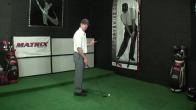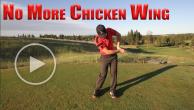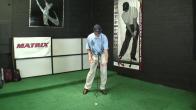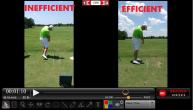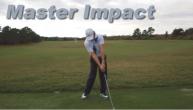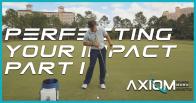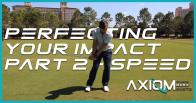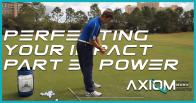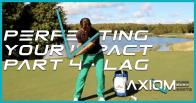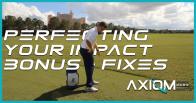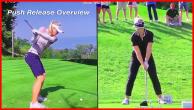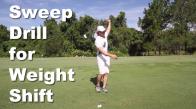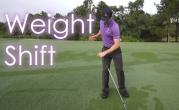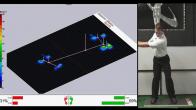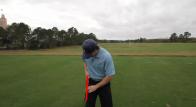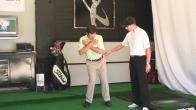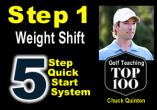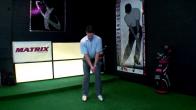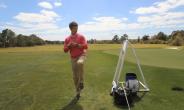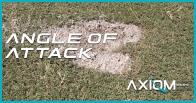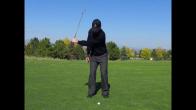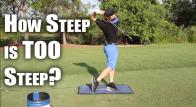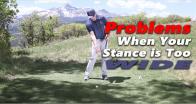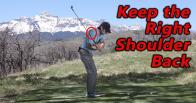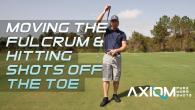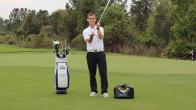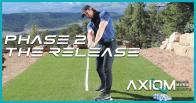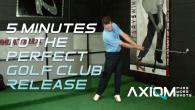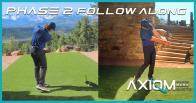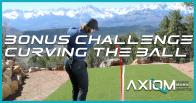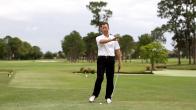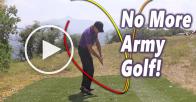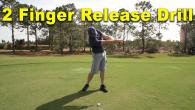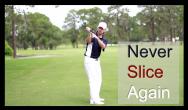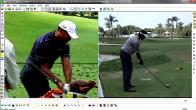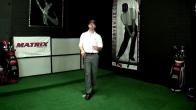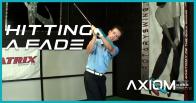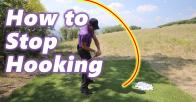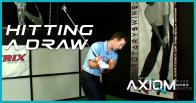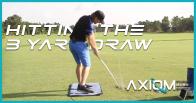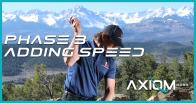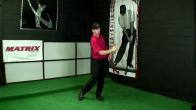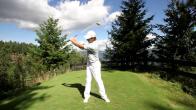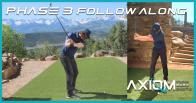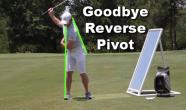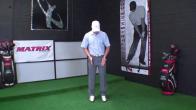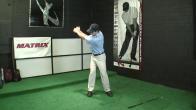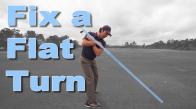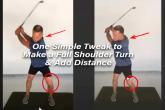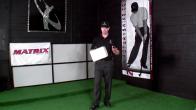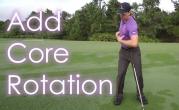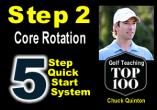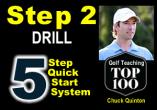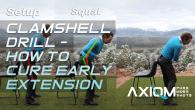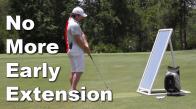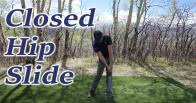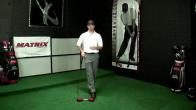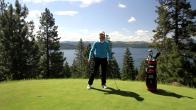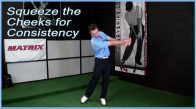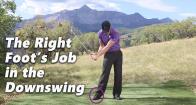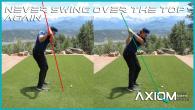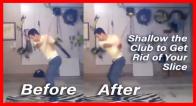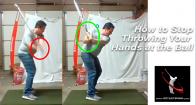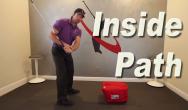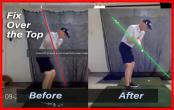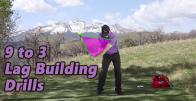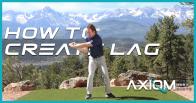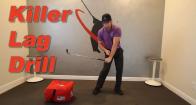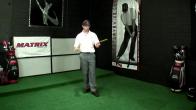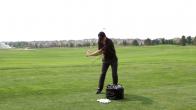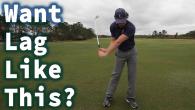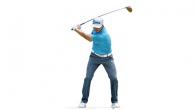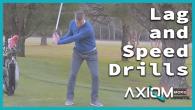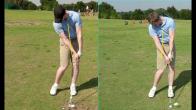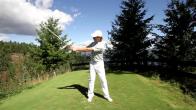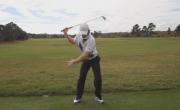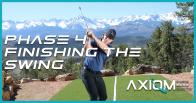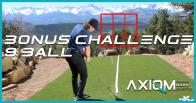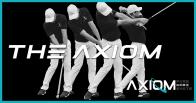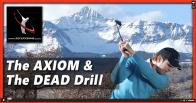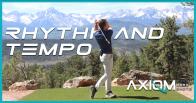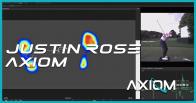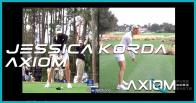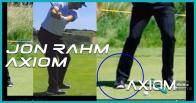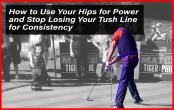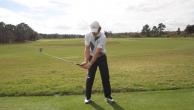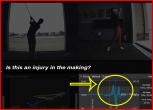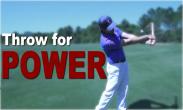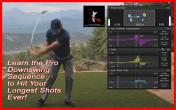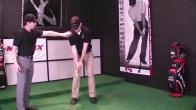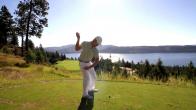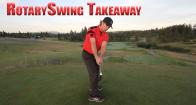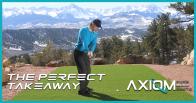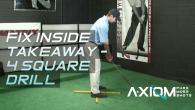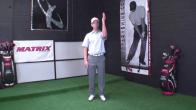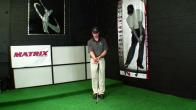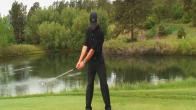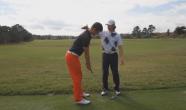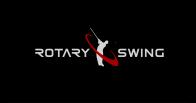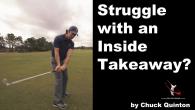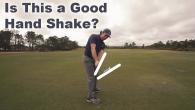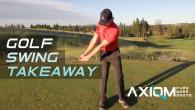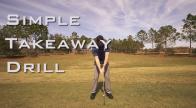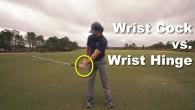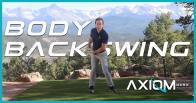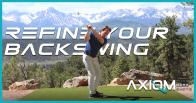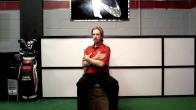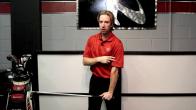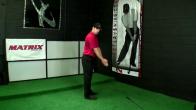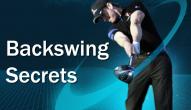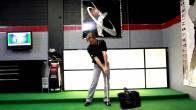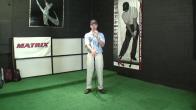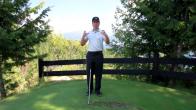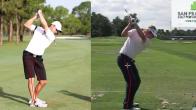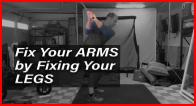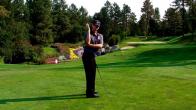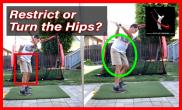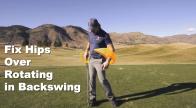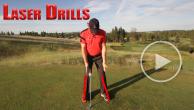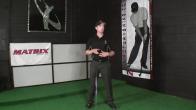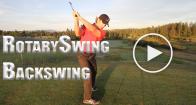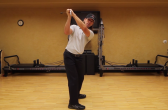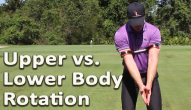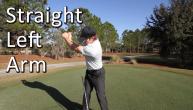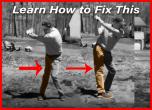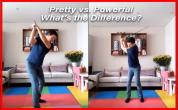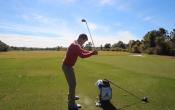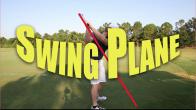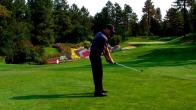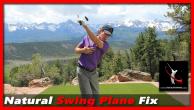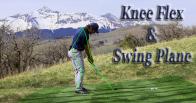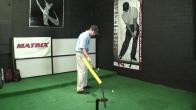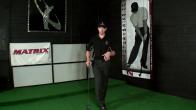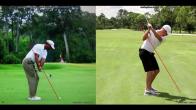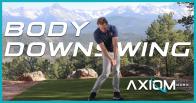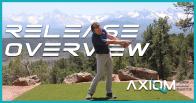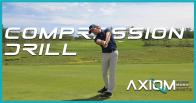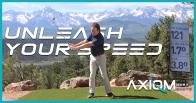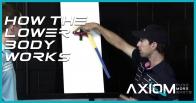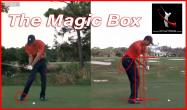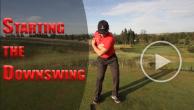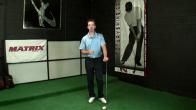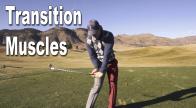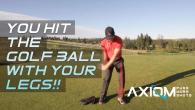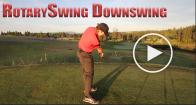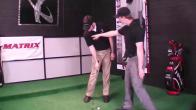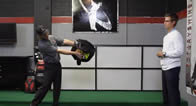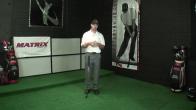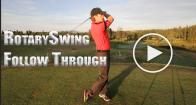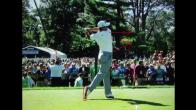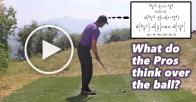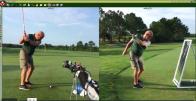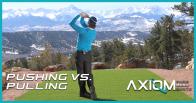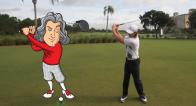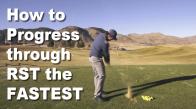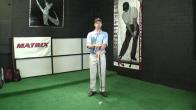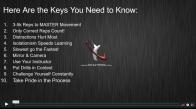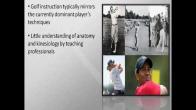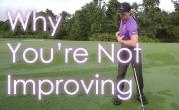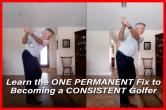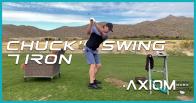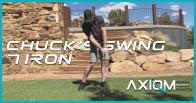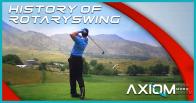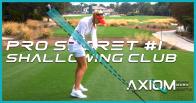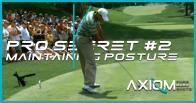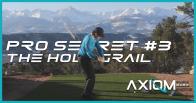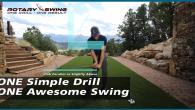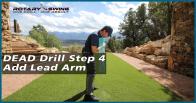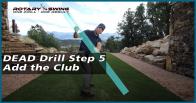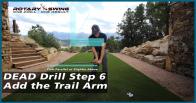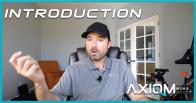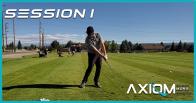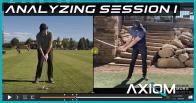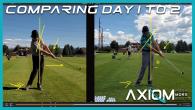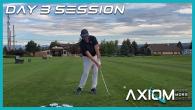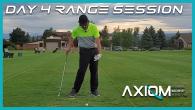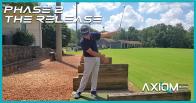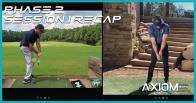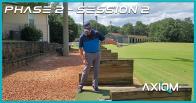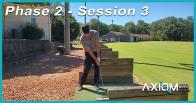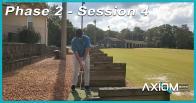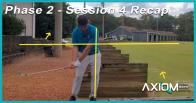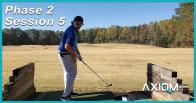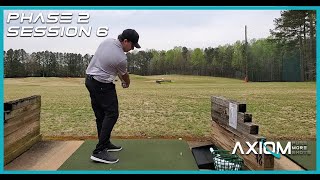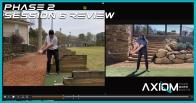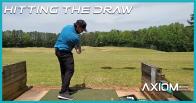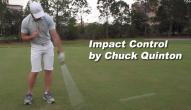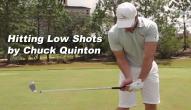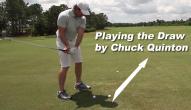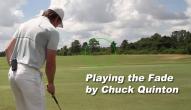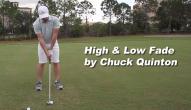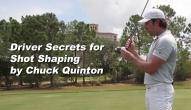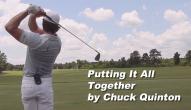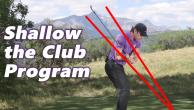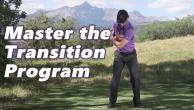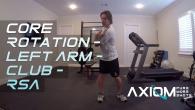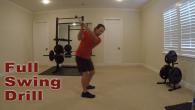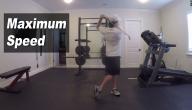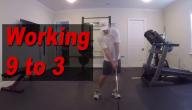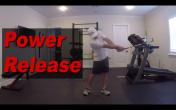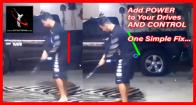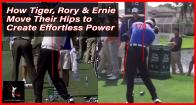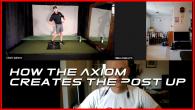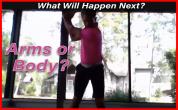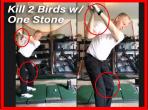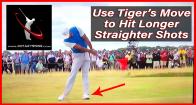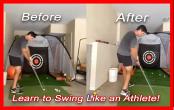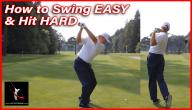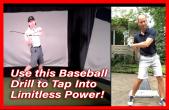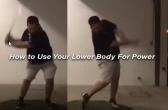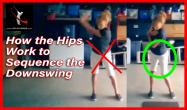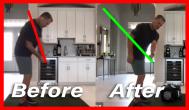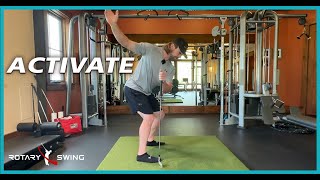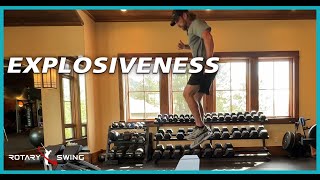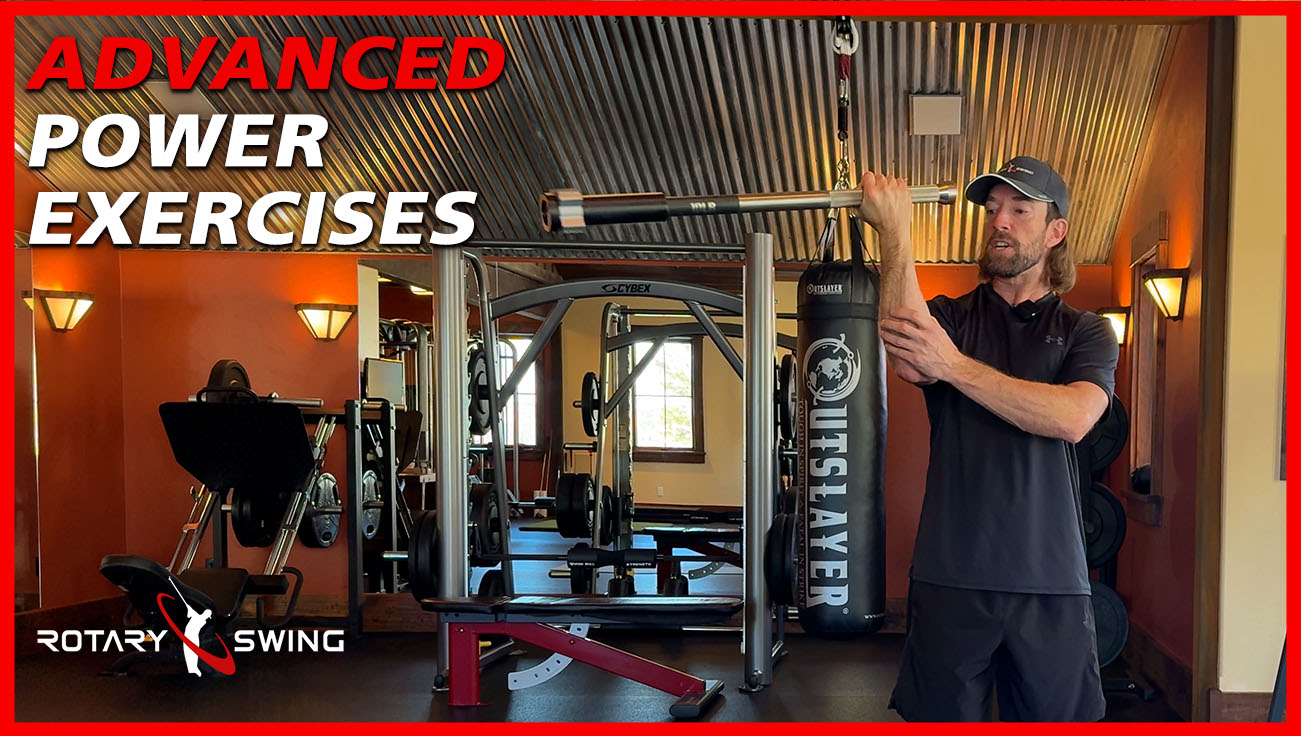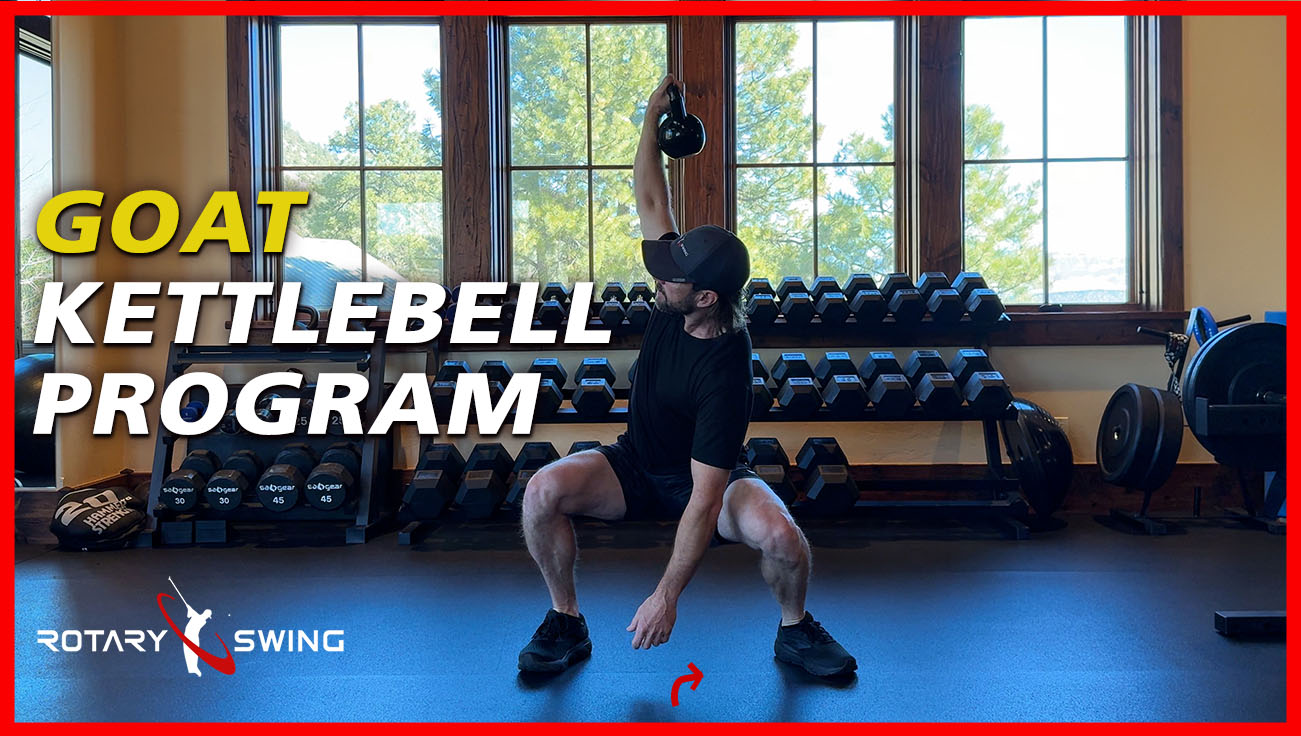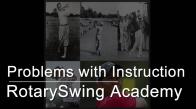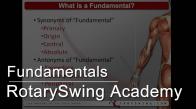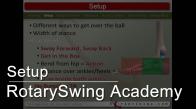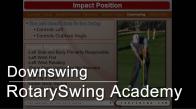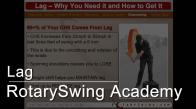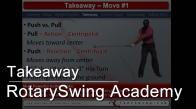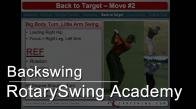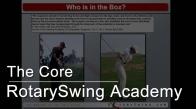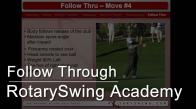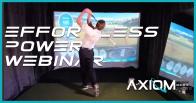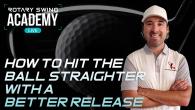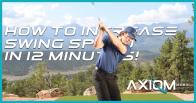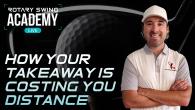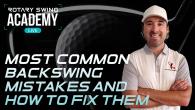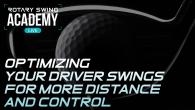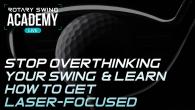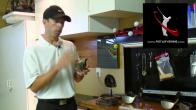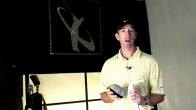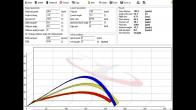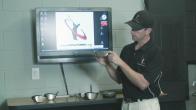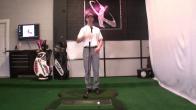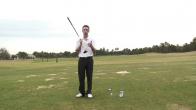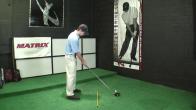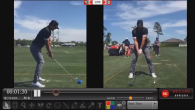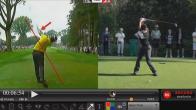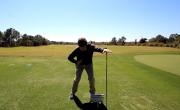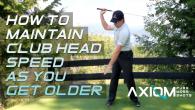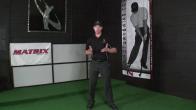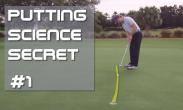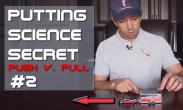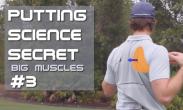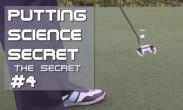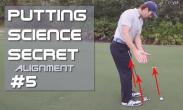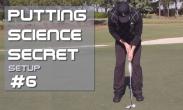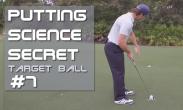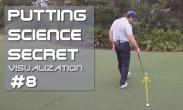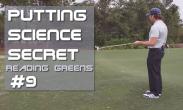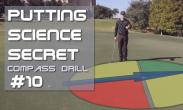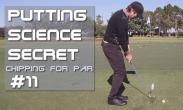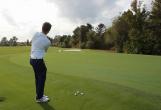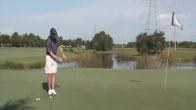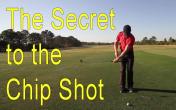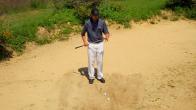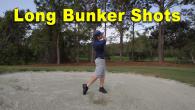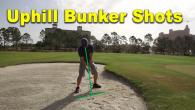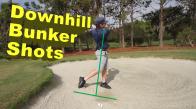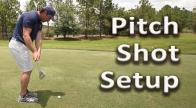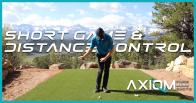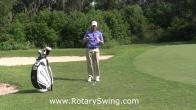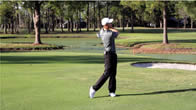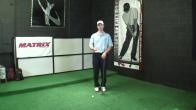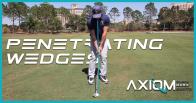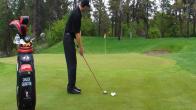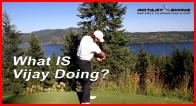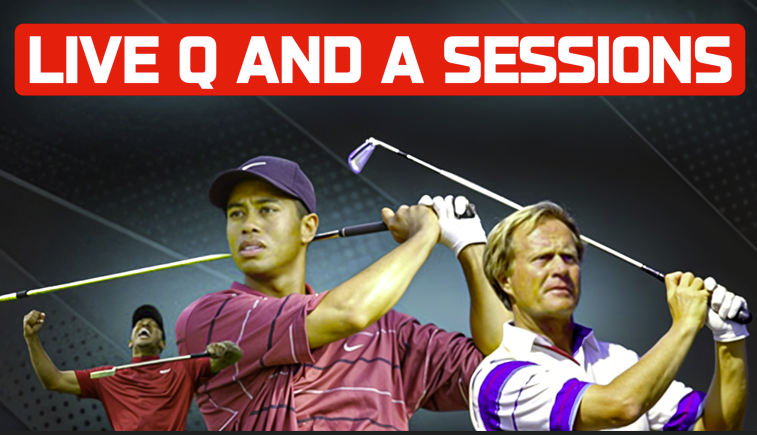Q-n-A Webinar 6: June 11
Q-n-A with Craig Morrow, sixth webinar, June 11th 2025
All right, everybody.
Welcome.
Can you hear me?
The old proverbial first question.
Yes.
All right.
All right.
Fantastic.
Hello, Ron.
Thanks, David.
I appreciate that.
Hello, Mary Alexander.
Hey, Mike.
How are we doing today?
All right.
Well, since we have a live mic, yes, I can hear an alpha.
Hey, Michael.
All right.
Well, how are we doing tonight, ladies and gentlemen?
Welcome to the fifth or, I don't even know at this point, but the past the midway point session of Q &A.
So thank you, as always, for spending your Wednesday evening with me.
RST instructor Craig here.
I will be your fearless leader tonight.
How's everybody doing tonight?
How are we doing?
How's the swing?
How's the game?
As usual, I'm going to let everybody kind of pile in here.
I got here a tiny bit earlier than I did in the last session, so my heart isn't going nuts, but I wasn't able to sneak in any food.
Hey, Ray, how are we doing today?
So as my ticker is increasing on this side, How are we doing?
Swing feeling good?
We have all this down now?
I mean, let's see.
It's what?
The fifth session now?
Or no, the sixth?
Something like that?
There shouldn't be any questions at this point.
Everybody should be, we're scratch golfers, we're taking everybody's money at the club, and there's nothing left to talk about, right?
That's kind of the point.
Are you going to relate the GOAT 170 plus yards?
The new video?
I mean, I know the components of it if you have a question about them.
Iron to the driver's swing.
Driver, I'm leaving with the boss, man.
I can still answer a few things, but put those up in the community.
I think I got a couple in those in that stack today.
Wife says if I break 100, I get new clubs and fit it.
We can do that in one session.
Do I get new clubs too?
If you break a hundred, do I get new clubs?
He's talking to new eight iron video.
Yeah.
I mean, that's the same principles in the new eight iron video apply to what we're doing here.
I mean, I can answer a couple of questions at the end and that's the thing.
I'm still, I think that that format's working well for us.
I'm going to go through the questions, talk about what everybody's been putting in the community page.
And then at the end, I'll open it up the last five, ten minutes to question them.
And I was pretty sure somebody was going to ask about the 8 -iron video.
But the components of the 8 -iron video are the same thing that we've been doing here.
I think that sometimes people, especially.
because the movements that Chuck's working on are exaggerated to see them on camera.
They think like you've got to make this big kind of wonky motion.
That's just so you can see them.
And then sometimes, you know, it's the feel and real aspect.
Especially like when I work on people with takeaway, take somebody so used to taking it inside.
When I get them making the takeaway correctly, they literally feel that the club's out here.
And then I'll show them on video and they'll be like, it's perfectly in line.
So I think that's some of the 8-iron mojo.
All right.
Hi, Jack.
How are we doing tonight?
Ticker's increasing, so I'll give everybody just a couple more minutes.
I will tell you something that I learned.
I guess somewhat golf-related.
Artificial turf burns when it's.
The light is being reflected off windows at a certain angle.
I would have thought, by now, I mean, I've got paint that I put in a fireplace or a drill or grill.
That, you know, is 800 900 degrees resistant.
But apparently, golf turf at about 176 degrees Fahrenheit burns.
So I gotta work on that one.
Hey Bill, how we doing tonight?
That video lacked emphasis on planting the lead leg and posting up on it.
The 8-iron?
Ron, are you talking about the 8-iron video?
Because I thought that was a big emphasis on it.
About how the lead leg, getting the feeling of getting yourself to plant this way so that as you drive, this can post correctly instead of everybody getting too external and not being able to post on that leg.
I thought there was a big emphasis on it.
Now, I mean, I'd need to go back and watch I can't say I've watched the whole thing.
But, you know, as you're getting to here and you're making this motion right here, that's first putting the big emphasis on getting back into this side.
And then as you're driving your core, because this leg isn't like this, which causes a very.
Unstable post I'm actually able to drive and get internal femur rotation correctly, so it actually makes the post even more stable.
Because most people and I'll just go ahead and elaborate on this since it's up there.
Um, most people this leg right here, they try to rotate out of the way, all right, and that's remember.
The downswing is a combination of lateral, rotational and vertical motion, so the posting right here is a vertical motion, it's not a rotational motion so to speak.
And what you need right here is called internal femur rotation.
That's how you actually post, it actually rotates internally this way.
So when you make that motion and you drive against your leg, you see how my knee can't go this way, so it gets my hip to get this rotation this way.
So it actually really braces that post because it think about it this way.
Think if I did the opposite and I had like a big splay like this, all right, if I were to get up here towards the top and plant, you see how that.
I can get this really externally rotated.
And that's just going to cause me to spin.
Now if I go like this and now I try to drive, look at my leg.
That thing is like a post.
That seems to be most important to accelerate the arms down to release the wrist at the ball.
Yeah, because your core is moving it, so it's increasing your hand speed as you come down.
Maya, I don't know.
Maybe because when it's in the rain, you don't force anything.
Maybe when it's in the rain, you keep everything.
You're worried about losing grip of the club.
You're really hyper -focused, but you swing a little bit more within yourself.
And when you go out nice sunny, you're trying to make everything perfect.
It should be a focus issue.
Johnny, the 160-yard video doesn't mention supination, only body movement.
Supination automatic body movement, it's correct.
For some players, yes.
If I get up here towards the top, and I answer these next two, then I'll get to my list.
We'll leave Q &A to the end, even though this is called Q &A.
The supination motion right here is I move into side bend.
So if I'm doing that 180 -yard shot, and I'm going here, here, Here, you can see as I'm moving it aside, what's my trail arm doing right now?
That's in supination.
That's not getting here and going this way.
But you still have to take everything.
You still have to take the information for you.
And what I mean by that, some players are always going like this.
And so if I stop them right here and I say move into side bend, they're like, oh, okay, that's what shallow feels like, Craig.
Then they get in front of a golf ball and they're like this.
Because their feel is so off of what shallowing the club is, what supination is, some players have to feel that more.
I gave this example to a student the other day.
All right.
Now I'll leave you with this before I get to the list.
Let's take my golf swing.
If somebody told me to shift weight, all right?
So if somebody said, Craig, I need you to focus on shifting weight into your trail side, you know what would happen?
I would be over here like this because I already shift weight.
So telling me to do something that I already do and feeling that is going to be an overcooked motion for me.
But for the vast majority of players, it's not going to be.
So you still have to take what is it, you know, kind of necessary, what is it that I need to pull out of this video, you know, my problem-wise?
Because I've already done it so much, I've already shifted weight so much I don't have to think about it.
There's a problem in golf, especially players that work on their swing a lot, that we call getting desensitized, all right?
And so you may work on, let's say, shifting the weight.
shifting weight into your trail leg for a week.
So you're here, getting weight into the side, getting weight into the side.
And then after a week, you're like, well, that doesn't feel like it did.
It doesn't feel as dramatic.
It doesn't feel as loaded as it does.
So I need to shift weight more.
And so they start overcooking it and overcooking it to try to get the same sensation, but you're already doing it.
You've now gone from a conscious needing to do it to now you're moving through that position and you're just not as aware of it.
Because you've done the reps.
All right.
Yeah, you don't need to make your arms speed up, Bruce.
As I'm getting here and I'm rotating my core, this is what's moving my arms.
I'm not trying to take my elbow and speed that up like that.
I'm not trying to have increased arm speed.
Kenneth, new member, wondered whether I should change from a baseball grip.
It's not the worst thing in the world, but ideally, for a goat, it's going to be interlocking just because of the way that you have the placement on the club.
But with that said, and if you're a new member and this is your first time, Kenneth, welcome to the club.
I would highly suggest going back to the first webinar, because by the time we get to this point, a lot of the questions that you may have have already been answered.
But welcome to the club if this is your first time.
With that being said, let's get to the list.
What do they have for them, Johnny?
Can you answer this question?
I hope.
How do you know if a trail side pattern versus a lead side pattern is right for you?
Can you please hit some key checkpoints and insight that would determine which one of these patterns are best?
given a player's individual swing traits or abilities?
That's a little bit tough.
All right, to be honest with you, I'm going to answer it the way that I kind of think about it, especially, you know, like if I'm working with a student.
So how do you tell whether a trail side pattern or lead side pattern is for you?
The first thing that I have a player do is I have them contemplate what do they typically do in hitting and throwing sports?
What arm do they usually.
use to throw speed?
What side are to throw a ball?
And what side do they usually create speed with?
What would they do a tennis racket with?
What would they write with?
What is typically their everyday dominant arm, dominant side?
That's just the very first question.
The second thing that I usually do is I have them hit balls, to be honest with you, is I'll say, hey, I want you to take the club, if I can find one, and I just want you to make some shots.
I want you to feel the club release back and through.
And what I'll sit there and watch is how their body kind of reacts.
Take my trail arm right here.
I'll sit there and watch somebody go back and forth and try to get a feel for the ball.
But I'll kind of watch how their body reacts.
Then I'll do the same thing with their lead arm.
And I'll kind of see how everything's moving.
I'll see if they actually start to create some type of kinematic sequence.
And so one player, or most players, One side or the other, they're going to typically look like an athlete.
They're going to typically look like they know how to create some coordination from that movement.
I wish there was a test or one -size-fits-all.
I know we have the test online.
We actually have one where you can go in and Chuck has a couple questions to try to decide which one you are.
But that's kind of the first thing.
Hit some shots.
See.
Which feels better to you?
See how your body coordinates it with.
This isn't an exact science, but I also think there's a little bit to have to do with personality.
Personality is in a lot of things in life.
The lead side dominant player is usually the more laissez-faire type player.
So I'm a lead side dominant player.
I was trail side for 20 years and I've been lead side for the last one.
Lead side is typically going to have a ton more lag or a little bit more leverage from the wrist.
You're going to need a little bit more rotation from your hip to help sling it, but the lead side is going to typically be the more kind of hands -off approach.
I'm just going to kind of make this big, long, lazy swing, use a little bit of lag, and let this kind of work on its own right here.
You know, if you think like Ernie Els or something like that, it's typically going to be the person that kind of that tempo.
They're just kind of letting things happen, kind of letting the swing come to them.
Some people don't agree with that philosophy.
They're like, I have to control something.
I have to do something.
Those players typically mimic a little bit more of trail side.
They want to have a little bit more firmness.
They want to feel.
with whatever your definition of athletic is, but they want to feel more athletic.
They feel like, hey, just like a tennis forehand, I want to be able to drive my court.
I want to be able to push a little bit more from my trail side and generate some speed.
They're typically the person that wants to move more, that wants to be a little bit more active.
It doesn't mean you have to be, but that's typically the player that wants.
I want to impart my will on this golf ball.
For me being lead side, I'm like, all right, there's the ball, la, la, la, la, la, la.
And then let it get in the way.
So even though there's not an exact science behind it, I also think there has to do with kind of a personality trait.
Is do you have to have ultimate control or do you want ultimate control and to be able to add force?
Trail side will allow you to do that because you can get here, wind up here.
I was trail side for 20 years.
All right.
You can add and you can be more forceful.
You can kind of put your own two cents in it.
So to round that out, I would hit balls.
I would think about what you do in hitting and throwing sports and what you create best speed from.
All right.
And then just kind of think about what you want out of your golf swing.
The lead side to me.
Once you kind of get it, it's very kind of.
I mean, I don't practice.
I don't really do anything.
It's there.
I have a bad back.
I've got a really bad body from all my injuries.
It doesn't really put a whole lot of pressure on me.
Now, the trail side, moving correctly, it's not going to put a whole lot of pressure on you either.
But if you like to give it a little bit more view, a little bit more.
Trail side is going to typically match a little bit more.
Or if you're very good and you're very coordinated with your trail side, that's kind of my two cents on it.
Second question.
Please discuss the release and release timing, maybe slow it in motion to get a better feel for the J.
Now, I think we've covered that one enough, but I read it how they get posted.
So as I'm here, I'm supinating, I'm deviating, then I'm rotating.
And so this feeling is going to feel like a little bit of unhinging, and then unhinging in the grip, kind of missing my forearm right there.
And that's why I think that's the best way to kind of feel it, is just go like this, and then miss your forearm.
And you combine that.
It becomes a pretty free release, and that face doesn't have to really do it.
You don't have to really control it or put too much of your will in it.
Question number three.
Is it an option to start the swing from GDP, like an actual swing, to create more feel where GDP is exactly reverse engineering?
100%.
I do that with players all the time.
If so, can you show it on camera, first shorter swings and later on to full swings?
I do that all the time.
So if I'm giving a lesson or doing a live lesson or a human lesson, a lot of players don't know what the delivery position is right here.
And this is what we call GDP, elbow pit, palm facing away in front of the trail hip right here.
This is a really good place to hit balls from.
To start training your mind and training your brain, this is where I want to start delivering this.
Especially players that have the tendency to fire too much or cast from the top, where they race too much and their arms stay way behind.
Understanding that we've got to get to this position, period.
You have to get to this position.
So starting from right here, this is a really good place.
If you even go to the GDP video, I think he does the pump drills in it.
So if you get into GDP right here, this is a really good spot just to have a little bit of wind, just to get a little bit of momentum going.
And then pivot through.
Start in GDP, pivot through.
This is a really good way to get used to, okay, this is where I'm starting to deliver the club from.
I've got zero problems with that.
You can go from there.
You can make it a little bit bigger where you kind of get, I call it the L position because it kind of looks like an L, where you get up here to the L and then pivot through and release.
I think anything that prioritizes getting you into a correct impact position.
Impact is the only thing that matters, all right?
It's the only thing that matters.
It's the only thing that's telling that golf ball what to do.
So anytime you're working on a drill or anytime you're thinking about what you need to do in the movement, that's going to prioritize, oh, this is how I go from here to here, where I have my shaft lane, my trail wrist has extension, I'm on my lead side, I'm in proper secondary tilt, side bend, head behind the ball.
Anything that's prioritizing what really matters in the swing, which is impact, I've got zero problem with.
And the follow-up to that question is, does the two-inch hand drill for the backswing still fit in and go through?
It does.
It still fits in it for two purposes.
One, it helps you really feel your core, okay?
So it really helps you feel how your arms don't kind of swing side to side independently, that it's really this that's winding.
There's going to be some adjustments with how your shoulder blade kind of moves to the top and you make a little bit of the transition, but that doesn't mean there's not a purpose or there's not a place for the two-inch hand drill anymore.
A lot of players have trouble feeling their abdominals.
I have trouble feeling my abdominals because my love handles, my obliques, I don't know if they're there.
They're supposed to be there, but there's stuff on top of them.
But that drill, and for players that don't know what the two -inch hand drill is, Chuck has it in the roll, the right arm, the takeaway old old video, and I've got it in a backswing video.
Stop over swing, where you take your hands, you stick them two inches apart, fingertip length staying the same and you learn how to move your arms with your core.
So I start to make little swings right here, where I maintain the fingertip length and the spacing.
And what that's doing is that's teaching me to engage my core, engage my abs to move my arms and hands.
Because if this changed, well, now my arms swing kind of independently of my body.
If my spacing changed, same thing.
So doing a little two-inch hand drill like this to feel how your arms move with your core, zero problem with that.
Because that's just going to get these muscles awake.
It's going to get them alive.
If you think of the GOAT 9-3 drill.
What's the first part of the GOAT 9-3 drill?
What does Chuck want you to do?
Starts out in his office.
He's got the foam roller.
He's talking about making sure that you're staying in posture, getting that hip back.
But when he gets into the gym session, what's the first thing that he wants you to do in the GOAT 9-3?
He wants you to take the setup.
He doesn't want you to really worry about a ton of face rotation or anything.
All he wants you to do is just get used to here.
Here, not worrying about the face, not worrying about anything, but getting your core activated, with that face staying square, right and through.
Well, what's?
what's this doing?
That's the exact same thing.
So there's still a place and purpose for that drill.
There has to be a place and purpose for that drill.
It's one of my drills on the site.
We can't get rid of that.
Can't boot me yet.
Now, here's a good question.
Unfortunately, it is completely natural to want to use muscle power from our arms.
And this one.
Over the years, this becomes a bad habit that is difficult to come out of.
It more often or less results in over-the -top and slicing 100%.
If you are coming over the top and slicing, you are pushing.
You are trying to generate power, trying to generate by using your arms, pushing your arms, pushing your shoulder.
And that usually, more than 99 ,999 times, is because you're trying to generate some type of power.
So it seems like the solution somehow is to stop using our arms.
But we can't chop them off.
Or can you?
I do have a hacksaw in the garage.
So we must keep using them, but very differently than before.
How?
Well, that's what we do with our loading, our core rotation.
Just like I just showed you with the two-inch hander, I haven't done anything with my arms yet.
I haven't really done anything with them.
But maybe you can talk about this in the webinar, and I guess that the question relates to effortless power versus powerless effort.
And I think that's really the nuts and bolts of it.
The easiest way, one of the easiest ways, in my opinion, To get over the mental hurdle of speed versus power is the impact bag.
Now, I'm not trying to sell you on anything.
Hopefully, you'll be able to hear it.
But the impact bag is your ultimate weapon to really understand the effortless power versus powerless effort.
Okay?
That's the biggie.
I saw a couple of things, but I just want to make sure.
Okay.
Because you have to have some type of feedback for this.
Everybody feels that using more muscle like this, using a lot of pushing power is powerful.
And I completely get that.
We use in the clinic all the time that if your car got stuck in the mud, would you have everybody go to the front bumper and try to pull it out?
Or would you go to the back bumper and try to push it out?
we'd obviously go back behind it and try to push it out because you're going to be able to generate more force.
The problem is in the golf swing, you need speed, not power.
That's why little guys like me and other little people can hit it very far.
So let's talk about this impact bag for a second to help you get over this.
Hopefully I won't break anything.
And I apologize if this is really loud in the mic.
I've never done it on a microphone.
If I've got this impact bag right here, I could go to the top, and let's just say, for instance, I'm going for power, and I just started to rotate everything down as hard as I could, all right?
So that would look like this.
Okay, so you can see that bag and what it did right there.
That was a lot of effort for me to move that.
Now you tell me.
What would I really want in the swing?
Producing that much effort?
Getting that kind of pop?
Or would I want to get here?
And what was the difference in that pop?
Now, I know that may not come over on the microphone, and I apologize if that was loud.
But one was much louder than the other.
That's the ultimate tool to getting over that, because what you need in the swing, you need.
Speed.
I can generate a lot more speed by releasing this leverage from the wrist and having this rotation in the face.
I can sit here all day long, and generate a lot of speed without a whole lot of effort.
I was sitting there doing la-la-las as I was doing that.
So I think that the impact bag is your ultimate tool.
to really feeling and hearing the difference in what speed versus power is.
The golf swing, we need speed, okay?
Now, to another one of that point.
This goes back into kind of the leverage talk.
Now, this was really good in lead side training to think about it.
If I'm right here, can I move this club faster like this?
Or can I move it faster like that?
Now, which one am I using a lot more effort and which one's moving faster right there?
So you've got to think about the golf swing.
You've got to think about the club as speed.
I'm getting whip.
I'm trying to get this to move faster than me.
The more power I'm trying to give it, think about it.
The more I go like this.
This is staying back here.
This isn't rotating.
That's muscular effort.
But as soon as this kind of starts rotating and releasing, this is speeding up relative to But you have to think that you want speed, not power.
The more effort you kind of apply, the more you try.
All right, I'm not saying you don't have to work on your swing or anything like that.
But the more that you're trying to do something.
It's kind of like, Um, if you go to the dentist and you're going to the dentist and getting into your teeth right there.
Do I want the person that's sitting there, like thinking, going through the steps and it's like, I'm gonna get?
Or do I want them?
Just, Oh, here, I'm just gonna make the motion, just gonna move, I'm not gonna, I'm gonna Get that.
If I get the shot, I want somebody to prick me.
I don't want somebody to jam it into me, hopefully.
But the big thing is it's speed versus power.
You need speed in golf.
Speed is the name of the game when it comes to what kind of separates everybody.
It's where the distance is coming from.
And so effortless power versus powerless effort.
In golf, think about the little guys.
Think about Ricky.
I think Ricky is a perfect example.
Has anybody ever met Ricky?
It's like this high.
He's like this big around and he hits the crap out of the golf ball.
It's not because he's big and muscular or anything like that.
It's because he's getting whip.
He's getting speed.
So I think that people have to hear.
I think that people have to feel that to kind of convince themselves.
And if you grab an impact bag and you do one where you're just keeping it connected to your body like this versus another, whether you're doing J release or any eight iron, 160 yard video.
and you let this club go, you're going to hear the difference, and that's really what you're looking for.
This club will always be able to move faster for you when you release it correctly any day of the week.
Should the lead arm stay connected to the torso throughout the swing?
No.
I feel like it truly helps create the snap release, but not sure if it promotes a slower swing speed.
Now, it could be useful.
I mean, say you've got some bad body parts and stuff like that.
It could be useful to keep the lead arm connected.
But if I keep the lead arm connected throughout the swing, for me, that's about as high as I can get.
Now, I know for me that if I get here and I load in my trail side and I get in my rotation side bend extension, I can get up to here.
Now, if you look at my lead arm, it's no longer connected to me.
It's still in front of me.
And I do have a little bit more depth of my hand because as my trail arm folds, it's going to allow my hands to cross center lock.
But my lead arm, I don't want to keep it connected like this throughout the swing.
As I start to move into extension and I start to get a little bit more height right here, I can generate a lot more speed from there than I can right here.
From here, I'm going to feel a little bit too tight in my body and it's going to mimic more kind of like the beginning stages of a.
Goat nine to three drill.
So the lead arm doesn't stay connected throughout the swing.
All right, as you start to elevate or the arms start to come you start to fold, especially if you're trying to generate a lot of width in the swing.
Think of like a Davis Love.
Like if I'm here and I'm trying to generate a lot of width, I'm going to have a lot of high hands, a lot of width right here.
So that connection's no longer there.
I don't want to glue this to my side or glue it to my pec.
It's a good question, though.
Does it promote slower swing speed?
I don't want to say it promotes it, but you're not going to be able to maximize if your arm's always glued to your side.
It's like the old towel drill, you know, where you take a towel, put it underneath your armpits.
That's not how the swing works.
That can work from here, but that is one of the worst drills you can do for your swing.
Let's see.
Was wondering if you can elaborate more on the throw the club head from the top and letting your body react rather than trying to follow the power sequence.
What position should we be in?
Order table to throw and allow the body to follow.
So I'll answer that one, because that's that I don't mind that part of the question.
The other one we've already answered, though.
What position should we be in in order to able to throw and allow our body to follow?
Well, think about it.
What do you?
If I'm going to throw something, what position do I get in?
Do I stay here on my lead leg and throw if I want to do it with a little bit of speed?
So one of the big things that I see people often, often, often dismiss, not do, I see it daily, is they don't get into their trail side.
Think about if I had a pitching rubber right here.
What's the first thing I'm doing?
I'm picking up my foot and getting into the rubber right here.
So if I'm trying to throw, I'm getting into my trail side.
As I start to move up here towards the top and as I start to shift, now you can see as I'm starting to plant right here, I'm starting my throwing motion.
So as I'm starting to move back into transition right here, as I'm finishing my backswing, this is when I'm getting into my throw.
But the whole kit and caboodle about this, if you don't get into this side, it's going to be insanely hard to throw the club correctly.
All right, that's why the 168 iron video or 9 to 3 video or backswing video, you know, where Chuck has, you know, he talks about keeping this leg right here and then pivoting into this, having this stable side.
You've got to get into this side and you have to do it early.
You want the swing to be very reactive.
If you want the swing to work for you, make everything a byproduct, make everything reactive.
If I get here and I start loading into this side, My brain is going to say, all right, well, he's going to go into that window if he doesn't start going or thinking about going this other direction.
That's going to be how I get from here to here.
So in answer to that question, what position should we be able to throw to allow the ball to follow?
I would focus on just getting your load.
You've got to get this first so that you can have the transition to be able to throw because that's what I would see.
That's what I see way more often than not why people can't do it from the top is because they're trying to do it off their lead leg or they ignored that whole first part and never got over to that side.
There's no stretch, no load.
I have a question about the squish the bug move versus counter torque.
This isn't squish the bugs.
That's why I'm reading These two moves seem counterintuitive.
In the counter torque move, Chuck says the trail foot moves back similar to a hockey player, moving their foots towards their lead leg but pushing backwards.
So the counter torque move that he's referring to is coming through and letting that slide back that way, letting the trail leg move this way, okay?
Because if you're hitting a big slap shot and you're trying to stay stable on the skate, the leg would kind of be moving in this fashion to create counter torque.
In the squish the bug move, the trail toe seems to push the trail foot down the line.
Can you reconcile these feels and movements?
Are these two moves different?
Well, is there any perfect segue to Chuck's Instagram post today about stalling or breaking?
If I'm going to use the squish the bug and I'm going to get up here and I'm going to pivot off this trail leg.
All right.
So I'm going to use my big toe, knee, hip, trail oblique, use my trail side to pivot this.
All right.
As I start to get into this vertical part right here, I'm not going to see this big dramatic counter torque move.
But does that mean that there's not this split second?
Or when I'm going like this, there has to be some type of quitting.
Now, Chuck on Instagram today was talking about how if you watch Tiger from the fanny view, that if you see as he's moving through here and he's moving into position and you watch the two belt loops, right?
I don't know if I have to.
Yeah, right there.
And you watch the two belt loops right here.
As he's going through, you'll see how they really don't quit.
His core is still driving through right here.
And so his point being is the fact that you don't try to stop.
Like you don't try to manually or consciously create a break.
Like stop your left arm or slam on the brakes.
The motion is I'm pivoting this way and I'm driving with that.
You can still see my foot is dragging as my adductors right here kind of pulling and firing.
So they're both in that motion.
The only thing the squish the bug is doing is speeding this up sooner.
That's all the squish the bug is doing.
All it's doing is taking your trail side and making this motion faster.
So as I, you can probably hear or even see my trail foot still kind of drags that way because I think baseball player is the easiest way to kind of think about it.
If I'm here because they can have that step in lateral motion, if I'm stepping and going this way and pivoting off that, this is driving.
But at some point in time, as that's driving, it's still creating a little bit of that counter torque resistance.
So I want to separate the two.
One, you're seeing in a slap shot because you're on a skate.
This is big and dramatic.
But then you can see the same thing like with the.
Rory or Scotty.
Scotty's sitting there dragging that way.
And think about Rory from down the line.
Ever watch Rory from down the line?
Rory gets up here, gets into position.
What does his leg look like going into impact and through impact?
What does his trail leg look like?
You're going to see that his trail leg gets really long and lean because he's really firing those glutes hard.
He's really activating.
Those butt cheek muscles right there, and when you're engaging these and really firing them, that's what's called.
That's what's causing and helping this kind of counter torque move to help the club kind of go through.
It doesn't mean this doesn't keep going.
And I'm manually just trying to get here and stop, you don't really stop.
I'm creating counter torque, so they're both the same.
The squish, the bug, is merely allowing you to add more of this faster.
But you can see as I'm doing that, You can hear how my foot kind of has that drag as I'm driving into this hip, getting that internal femur rotation and posting.
I'm still getting a counter torque from All right, number nine.
As I transition to the downswing, I definitely feel that I have already started to shift to the lead side as I complete the coil, bend, tilt, and rotation of the backswing.
Fantastic.
What's the question?
That's awesome.
First part of the question is as I transition into the downswing, I feel I've already started to shift to the lead side.
That's great.
That's the same thing as now I'm rearing back and I'm already stepping forward.
So I'm creating a little bit more of a stretch right there.
But as I'm starting to get loaded, I'm already getting back.
That's what should happen.
Should the throw initiate the rest of the shift in post or should the shift continue to start to pull the lead glute?
and then initiate the throw, or do both these happen at the same time?
Well, they're both kind of happening at the same time, but what I want you to think about is the throw kind of allowing everything to happen.
So if I'm here and I'm winding back like this, as I start to think about my throw, my leg is reacting to the fact, because I've got some intent, purpose, I'm trying to get.
My throw going, so I'm letting this kind of react to it.
That's why that motion that Chuck talks about with the footwork, I think is very important for a lot of players.
Because if you're going like that and you start to throw, you'll feel how like, that's creating this really big brace right there versus that.
So they're happening at the same time.
But what I would rather you focus on is the throwing motion, and that goes back to, if you remember, What's it called?
Intro on the goat code, step in tiger's shoes, or what it feels like to swing like tiger.
What does Chuck have you do in that video?
Don't worry, I'm not going to grade anybody on it.
What's the first thing Chuck has you do in that video?
He has you take a club or a shaft and flip it to this direction and says, hey, I want you to first just start to get the feel for some whipping speed.
And get the feel of getting a little bit of snap down here and now, as you start to generate that snap.
Make just a little bit bigger motion and see what happens.
If you start to rip it inside or spin your shoulders, or do anything silly, your whip is going to change where you hear that whip.
And so as I'm getting here and I'm initiating this back, I'm focusing on throwing my hand as hard as I can and letting my body react to that motion.
I already have some of the footwork, I already have some of the adduction.
Add not a BD in my leg.
Some players are going to have to train a little bit of that feeling.
That's why I like with the kettle ball and the other exercises on the site, is to get you to start to feel muscles.
There was a video, There's a lesson video that Chuck posted a couple months ago and he was talking about how players aren't used to feeling the muscles that you need to use in the golf swing.
So he sometimes takes players into his gym and has them work on some of the machines, kettlebells and machines that he has to get them to start to awaken and fire their muscles because they're not used to using them.
I'm used to using the golf muscles, so what I want you to do is be aware of the muscles that are firing, work on those muscles.
But when you get to here, I want that to be reactionary.
Because you're doing this throw with a little bit of intent, because that's going to mimic more trail side pattern.
Number 10.
What are the three to four most common faults you see all the time, and how does Goat Coat address this?
Well, I mean, I could be real simple.
You want advanced problems?
I know it says common, but I see some stuff.
I was kidding around with the students the other day.
If you'd seen what I've seen, you'd never hit a golf ball.
It's PTSD.
You'd be having these flashbacks to some things that you've seen.
You'd never be able to get over it.
My dad made a silly comment one time.
He's like, how do you swing the way that you swing with?
Seeing some of the swings that you see?
I'm like, Well, if I just looked at a golf swing and it changed mine, I was like I'd swing like Tiger Woods, because that's all I would watch.
Um, what are the three or four most common faults?
I'm kind of a Simpleton, to be honest with you, when I look at a golf swing.
And when I start diagnosing what people are doing, I really want to try to get down to brass tacks.
What's going on?
But I know that there's always a domino effect, all right, and so let's just, I'm gonna, I'm gonna kind of walk through it.
First is going to be set up, what I see literally all the time is that somebody gets set up.
And they get a ton around this here and they get a lot of weight back on their feet right here.
So they get too deep into their heels, they get too much roundness in their thoracic spine, and their club gets really, really close to them Now, what do you think is going to happen from here?
If I'm trying to hit a five on it, the first thing that I'm going to do is I'm going to typically start to go back out towards my toes and push out the club.
So one of the first common fault that I usually see is the weight.
That the weight gets too deep into the heels, you get too bent over, too squatty, and you're already having to play makeup from that position.
Go code rest is that in the setup videos, but.
As you work through from chipping to pitching and on and on, that's all we talk about is getting the weight feeling proper right here.
So as you move your core, you can move your pressure correctly, move your weight correctly.
You can't do it here.
Grip, I see all the time where somebody doesn't have it enough in the fingers, and even though they feel like they're in GOAT, they just have their hand turned this way, but they kind of have it in the lifeline of their hand instead of in the fingers.
Because you've really got to get it in the fingers.
Yeah, quick tip on that is, take the hand like this, like people, I, I'll ask people, I'll be like, What did Chuck show you?
It's like, Well, take the hand like this and get the grip on.
They're like, Oh, now I feel it in the fingers.
Because most people just come at it to the side.
And they get this and they're like, Hey, Craig, I got my v aimed at my shoulder, what's in your palm?
That doesn't do me any good.
You got to get it in the fingers.
Um, head motion off the ball, I see all the time the shoulders plane out and the head moves, and that's just pushing, with the left shoulder moving too much into flexion.
And so if you think of the hands webinar, 160 yard, eight iron.
This motion of really making sure that you kind of have this kick start, so that you get the momentum and the weight and the core going.
Typically, that's going to fix the issue because you're prioritizing how you are moving versus moving the club, which that's why everybody does that.
I'll give you one more.
Three or four more is common faults I see.
That's another real good one.
I want to be supination.
It'd just be shoulder spin.
I think that I've made a career on trying to help players with this trail shoulder that once you move into side bend into extension, that This, that's what everybody thinks is power, and that kind of goes back to my effortless power thing.
If you have an impact bag, go to the top.
I don't care if you do two hands or one hand.
Go to the top like this, and all I want you to do is drive your right shoulder or trail shoulder into the bag as hard as you can, and then I want you to leave your trail shoulder here and let this club snap, and you tell me which one's faster.
I mean, I would say that's the biggest one is that everybody thinks that this is the power source.
I was taught it was the power source.
Once you get it back there, once you get your trail shoulder behind you, so once you get your scapular movement and you get here, leave it there.
As you move into side bend, it's not going this way.
It's not driving.
Downswing, there is no kind of turn in the downswing.
It's just a.
It's a tilt as my hips are going this way.
So that's that trail shoulder drive.
That's in all the videos.
And that's a lot of the reason why we have you start so early with chipping and pitching and all that, getting that core going, is so that you get out of this.
That is a death move.
Nobody on tour does that.
Nobody.
Let's see.
Always struggled.
with combining getting power and not having the hips over rotate and getting really long arms in the back.
So can you talk details about the feel should be for the lower body load and going back?
Well, I think that's the easiest way to kind of feel that.
And this is a little bit of exaggeration.
If I were to feel like my leg was kinked in this way, and then I tried to coil, I'm going to really feel.
That kind of spiral, I'm going to feel my adductors right here and I try to sit back into this glute now.
This is an exaggeration, okay, but if I do that, I'm going to really kind of feel how I start to kind of torque into that leg.
Because more often than not, the players they're trying to rotate as they load and they go like this.
They let this knee go this way and when they get into this position, they start rotating so they don't feel any load.
So what I like to do is I like to get this kind of kinked in a little bit, but feel just a little exaggeration that the knee stays pointed towards the target and gets your hip deep.
And when you do that, you're going to really feel it.
You're going to feel how this kind of really torques into those adductors right there, and I can really feel it in the glute.
Can you quickly explain how to use the trail of leg properly?
Well, I think we did that.
I guess I'm trying to decipher if I move from the trail glute to lead glute to pull back and post, which feels rotational, or if I should be moving laterally by shifting from my trail glute and then pulling with the adductors with the lead leg.
The adductors are going to be pulling, all right?
So the adductors are going to be pulling.
But I still, that goes back to a couple webinars ago, is that as I go to here, If I'm trail side, I get my foot like this.
If I start squishing the bug, all right, so what's going to happen if I squish the bug from this position?
If I squish the bug from this position, you can see how that's driving my hip back right here.
I'm not really having to think about like making this lead leg work into that.
It's because this is driving, this is creating my brace right here.
I'm driving this into it.
And there was a, I don't know if y 'all watched that podcast that Chuck did with Mark Emmelman.
And he asked him, well, what do you feel?
Chuck's like, well, I feel this combined with this.
Like if I could tell you what the golf swing feels like, this is what it feels like is this.
And so the same thing, if I'm getting that with that supination, I'm still just doing this all of my trail side.
So are those lead side muscles still working and firing 100 %?
Let them work the way that they need to, especially if you just get the proper footwork, that'll automatically make it happen.
Most common causes of hitting it out of the toe, that's going to be getting steep.
Two most common causes of hitting it out of the toe is that you're pushing from this side, which is causing more of an.
Out to end swing plane, so it pushes it out towards the toe.
The second thing is going to be you trying to manually rotate the face, and so when you start trying to manually rotate the face.
Too much, this toe starts out racing the heel too soon, so especially if you go like this, that's going to typically be the most common for the toe.
The club head moves first by the hands and arms, the bodies following along.
The one -piece takeaway is not the way to go.
I feel the one-piece takeaway is why my head moves off the ball.
But what makes it feel not one piece to you?
That would be my question.
To me, it still feels like a one-piece takeaway, right?
Because I don't feel like I'm like, okay, set my wrist, do this, do that.
I'm not trying to put the.
To me, even when I'm going like this, it feels like I'm just moving one piece.
Like all I'm doing is just taking my weight and core, and that's winding me over to here.
So the club head moves first by the hands and arms, and the body is following along.
Well, what's the first trigger?
I'm triggering this way?
I'm not winding my arm right and then trying to get into the side.
What am I doing first?
Getting into this side, getting my core going, letting that follow along.
I think where players get off on the one-piece takeaway is they're still trying to put the club in position.
They're trying to find certain set position.
If you solely just shift your weight and rotate, I'm almost right there.
I haven't done anything with this yet.
That's just using the momentum.
Of shifting weight and rotating my core a little bit.
So I don't, I don't, I understand what you're saying with the question, but to me, it feels one piece.
Because I don't feel like I'm trying to make my arms do one thing independently of my body, I'm saying, hey, load and rotate arms.
You just follow along with that kind of goes the same spot every time.
Could you please show how the right trail hand supinates on the downswing to and through impact?
So this is an exaggeration.
You're not going to be like that in your golf swing.
It goes clockwise.
As I go clockwise and move into side bend, I'm going to get into GDP, let that pronate.
The only reason I'm going through that one a little fast is we've covered that.
In the right shoulder drop, how much of the angle between the right upper arm and right forearm should be intact?
Okay.
I guess it's a fault to straighten the right arm too early.
Yes.
So if you get up here towards the top and you straighten your right arm too soon, we don't want to do that.
So is the goal to maintain most of the angle?
How do we do that?
Well, it's not about just maintaining most of the angle.
Because when I get here and I get set up into position right here and I start to drop my trail arm and my core is moving, this kind of pendulum action of rotating and driving, that's what's maintaining this.
It's kind of like the old adage with lag.
If you try to hold lag, you're never going to have it.
Same thing with this.
You're not trying to just get up here and be like, okay, I've got my trail arm structure right here.
Hold, hold, hold, hold, hold.
You'll never do it if you're trying to hold it.
The only way that's going to be maintained is if it's part of a movement.
I've got to still have.
this core and this pivot as I'm feeling my throwing action maintain this.
And as you start to come down, it is going to start to straighten to get an impact right here.
But I think it's kind of, you're going to put yourself behind the eight ball in almost any part of the swing.
If you're trying to hold something like, all right, I'm going to get up here to the top.
And when I get into this position, I've got this angle.
All right.
So I've got the elbow, right forearm, right wrist, trail.
And I'm going to try to hold it into this position.
If I get all that tension, that's not how it's done.
This is in a movement.
It's because my trail shoulder, my trail scap's moving down.
As I'm pivoting back to this and supinating, all of that is what's allowing this to not fire too soon.
And it's the same thing that it comes, people ask this all the time.
If I'm throwing the club from the top, how am I not going to cast?
Good question.
But that's a cast a throw as I start to go this way.
My first motion is supination, The supination is going to help maintain the proper radial deviation.
Okay, so as I'm supinating, that's going to be how I'm maintaining that angle correctly as I'm feeling the throw.
Because I'm not just getting here and going straight and older deviation right here.
Because the supinating is going to maintain the radial deviation until it gets to a point of no return to where it has to start to work out, and I have to move an ulnar deviation coming down.
So the supination portion, as I'm starting to come down, is going to be how I maintain this angle until it's time for this to whip through.
So the difference in the cast and the throw, the cast is just taking the wrist and being like, all right, I'm just casting it out.
I'm going to go straight into ulnar deviation right here.
Same thing.
I'm not trying to take my arm and throw my arm out as hard as I can.
I'm focusing on my scapular movement and my supination as I'm going this way.
That's going to be how I retain this.
That's going to be how I retain this.
Because it's some forces of physics and some function of bioanatomy right there that this can't happen.
If I'm going like that fast.
It's going to be really hard for me to create a soup in a cast like that unless I've done some training for it.
Let's see.
We're a little bit over time.
We already did the thrusting of the back knee.
Okay, so I'll do this one and then I'll do a couple questions.
Can you demonstrate the thrusting of the back knee on the downswing?
We already did that.
But to show, this is what I think the important part is, but to show how it doesn't cause early extension, because that's something that players think all the time.
If I'm pushing a ton from my trail side, I'm going to create early extension.
Well, yeah, if you're pushing this way.
Remember, this pivot, if I'm driving this way, You have to think about your hips.
Do I have any?
We'll do it this way.
All right, Mr.
Chair.
So here are my hips, obviously.
So I've got my hips.
My pockets are around this, and if you even think like the old clamshell.
So as I'm starting to pivot through and get up here towards the top, and I start to drive with my trail hip.
early extension is going to be my trail hip driving this way, all right?
So my spine, my hips all get that kind of puppy dog humping the fire hydrant look, okay?
This pivot is driving this way, not this way, this way.
So as I start to squish the bug, my trail butt cheek has to come away from that chair.
But what'd you see with this chair when I did that?
Where's my lead butt cheek?
This is driving my lead butt cheek back.
So this one's going to come away from it.
As long as this is getting deeper, there's no problem.
I'm pivoting this way.
What people do is they attack it this way.
They start firing this way, and they get up out on their toes, and both toes are up.
Watch my feet right here.
As I pivot from my trail foot, Where's the pressure of my lead foot going?
As I pivot from here, the pressure of my lead foot's going where?
It's moving this way.
So as my pressure's going back towards my heel on my lead foot and I'm pivoting here, if I threw everything out towards the toes, now I'm in trouble, all right?
But remember, this is driving this way, not this way.
It's like this.
So as I do that, what is it?
What's this hip doing?
I haven't thought about this hip once doing this.
I'm pivoting this, which is pivoting this hip back.
So my trail butt cheek's going to come away, but my lead butt cheek's getting deeper, which is now doing what to my spine?
It's getting that old proverbial covering the chest, covering the ball.
All right?
Okay.
So now.
That I've done all the lifting I need to do for the day after lifting that chair.
I think that's it.
I can't tell time right now, but um, remember two points we got another couple Wednesdays of this.
Put your questions in the community.
I think I only have one and a half pages left right now in the community, so you got a pretty high chance of getting your question answered.
Secondly, and I'll put up here on the board, still, if you want, I'm a terrible salesman, but I'm not trying to sell you anything.
I'm trying to help you.
I have half off of my unlimited and a discount on live lessons, and I will put that on the screen now.
Please, if you're struggling, let me help you, okay?
Please, let one of our other instructors help you, please, all right?
I'm not doing it for anything other than the fact I want everybody to be happy in life and golf.
Thank you again for giving me an opportunity to help you out.
I'm going to stay for about five or 10 minutes.
I'd like to try to keep the questions pertaining to tonight's episode.
I'm sure I'm going to get a couple of questions about the 8-iron.
But thank you again.
I hope that you got something out of tonight.
We've got two more sessions to my knowledge.
If you want to hang around.
If not, replay will be posted as early as I can get it on the board.
And thank you again.
I hope tonight's session was helpful.
And if you want to stick around, I'm going to answer a couple questions.
And you'll see on the screen, if you want to do a live lesson or Jumpin' Unlimited, it's there for you.
So I'm going to go back, see if I can get any questions.
All right.
I'm going to start.
If I didn't see anything, my apologies.
I'm going to tell you where I'm going to start.
So if your question was above that.
Let's see.
I supinate fine, but at contact, the face seems really open, but thin shut.
So why would the face be super open at contact?
So if you're working down into position into here and the face is super open at contact, more than likely what you're doing is you're trying to drive your shoulders through, which is leaving the club open.
And so as you move into side bend and you move into this position, you have to start allowing this snap to happen.
And if you're pushing with the shoulder, pushing with the arm, or even pushing with the hip this way, it's going to leave the face a little bit open.
Thank you, Charles.
I appreciate that.
Thank you, Malcolm.
I hope y 'all are enjoying this.
I'm up here fighting for y 'all.
I'm from Georgia.
I can say y 'all.
It's a word.
It's like ain't.
David, Chuck say the core needs to outrun the arms through the ball and the arms need to come along for the ride.
Can you please demo that?
So that kind of goes back to the same thing that I was showing you with Tiger, David, is that.
As I'm moving into position, so let's just take that eight iron shot.
As I'm moving into position, my core is still driving this way.
I'm not spinning my shoulders.
But think about it.
As I'm driving my core and I'm working into here, the core is still driving.
And that kind of goes back to what I was saying earlier about braking or slamming on the brakes or stalling.
He's saying don't stall the core too soon.
The core has to.
Keep driving because like look at where my belly button is pointing right now And what we see is a lot of players is they're like, Oh, my core is now done, But the hands take over and their cores now.
I mean, my belly button right now is pointed like two degrees behind the golf ball.
And what he's saying is is the core?
Keeps driving through here to lead the way through the release.
You don't just all of a sudden just try to quit it and then snap the hands over really fast.
Thank you, Mary, if I didn't say that earlier.
Manny, putter grip.
I'm going, whoa, whoa, whoa.
Screen just jumped on me.
Putter grip.
I'm going very strong based on the early go-koop.
Yeah, exactly.
You've got to get it strong and in the fingers.
So when you're grabbing that putter, you've got to get it in the fingers.
Very strong base so that this connection right here and this feel and feedback works with your core.
It has to be.
More often than not, it's either in the palm or too weak.
Feels very uncomfortable when putting great.
Fantastic.
Pressure from middle finger, index finger, and thumb.
Peter, are you asking how much?
Chuck says about 5 to 7 is what he's feeling.
On a scale of 0 to 10.
0 being the weakest, 10 being the toughest.
Scott, I must have a fundamental error that magnifies with longer clubs.
I have mostly similar contact in ball flight with wedges through hybrids and fairway metal, but the longer club with specialty driver, my ball flight is substantially lower in moderate draws.
My instinct in self -videos makes me think that I'm swinging flatter with longer clubs, but I don't seem to rectify this.
with varying uprighting changes.
How stupid am I?
You're not stupid.
Golf is more stupid than you, Scott.
All right.
Don't.
That's not you.
So let me try to get a mostly similar contact ball flight wedges.
The club, especially driver, my ball flight is substantially lower in moderate draws.
Yeah, it could be that you're swinging flatter.
All right.
I'm going to take a shot in the dark too.
Just more specifically to the wood, it's not going to be everybody's case.
You don't create the launch.
So set up, getting into position, you're catching the ball at a different time.
And I see this a lot when players are trying to create speed with their woods or longer clubs, is they start trying to create the lift.
And if they're making a somewhat halfway decent swing and they're trying to create it, they start kind of hitting it off the bottom of their club.
Like this, and they start kind of getting a groove or two low, so they start hitting it kind of really low.
And they're not getting the pop on it.
Because you're not getting that proper release and catching it on that upward angle, you're trying to lift it, but you're lifting it with some angle.
You're not like having a cast or anything.
Let the club, in the position of where you're catching the ball, get it in the air.
To me, you're trying to lift it.
It's actually giving you the opposite effect.
Hey, Kevin, thank you.
I appreciate that.
I can't say that.
Not where I am.
Chris.
Thank you, Chris.
I appreciate it.
Go Pacers.
Pete, on the downswing, is the index and thumb involved?
If so, how much?
They're involved.
I mean, remember your middle fingers, your fulcrum, and you're getting a lot of feedback from those.
But I'm, I'm still, I'm not gonna, I'm not gonna say.
Anybody's a little bit more important than the middle finger.
But as I'm starting to come down right here, obviously I can feel the feedback of what my thumb's doing and what my index finger is.
I'm trying to control, or lack of control, the face this way.
So I really don't control a whole bunch of anything during this, but I don't.
I wouldn't say do a 10 with the thumb and one with the next finger.
I just kind of would feel this whole unit as being like a five to seven.
Like everybody, the middle finger right here, the index, this, they're all, they all have their role coming into it.
I want to put, emphasize on one or the other.
Like more pressure and I think about it as a unit.
How to stop flipping.
Why do you think you're flipping?
Most players are flipping because of push, but most players are flipping.
Because they stall out their rotation too soon.
Okay.
So I used to say this all the time, like in lead side players.
Most players flip a lead side swing because they don't have enough rotation.
It's more than likely the same thing with your flipping.
So if you're coming down here and you're flipping it like this.
So we're adding too much flexion in the wrist too soon.
What I would do is I would get here.
overcooked, letting your core come through.
If this is still driving, if this is still rotating, it's going to be really hard to get your core rotating and fire that, in fact, I think it would blow out my back.
You need to get a couple in there where you're getting core, getting it back, and really get that core coming through.
If I'm starting to supinate right here, my core is rotating through, I'm going to really turn off that flipping.
It's more than likely you're stopping and trying to steer the face.
Uh, just going through GoAt.
Trying to focus on supinating trail elbow back through impact, but hitting it block right?
If you're blocking it right, wait a minute, trying to focus on not supinating the trail elbow through impact.
Well, you get to a point where it has to pronate over, but it still goes back to the block, right.
Is usually going to be either.
You're pushing this way and so as you're trying to supinate, You start pushing towards the ball, so you get into a little bit of early extension, so you get a little bit even too shallower right here, and you can't get the club to catch back up.
Am I missing the wrist release, strengthen the grip more?
Well, you need the strong grip, Manny.
The grip stays the same.
You need the V going towards the trail shoulder socket in the correct position right here.
If you have the grip in that position, I would still think that your block right there as you're coming through, you're probably pushing a little bit more towards the ball and spinning out at the same time.
So you're getting a little bit of early extension and trying to open.
And so this doesn't have a chance.
As I start to get here and pivot and drive, you have to start to get the feel for how this club is going to have that rotation and pronation or pronation and rotation coming through.
That's why we start with those one arms.
Most of the pressure is, Peter, in that middle finger, but there's other things that have the job.
Mark, sorry I missed the webinar.
No worries, no worries.
Did you cover the lordosis question?
If so, I'll watch.
So you're not going to watch the video if there was no lordosis question?
I don't remember talking about it.
Let me go to my list right here.
Low doses.
You're going to be next week, Mark.
You're like six questions away.
That's not an excuse to not watch this replay.
That hurts my feelings, Mark.
You're not going to watch it if you're questioning, come on, that hurts my feelings.
I'd check out your swings.
Johnny, would you use the pressure shift laid out in the 160-yard video on wedges between 50 and 100 yards?
What do you mean?
In a 50 to 100-yard wedge shot, I'm really not going to have a ton of lateral motion back this way.
So as I'm hitting like a little 80-yard or 100-yard wedge, I don't have a ton of weight this way.
I'm already here, but I'm also not trying to really hammer a big post.
The motion's still the same, but I don't have a ton of lateral this way.
I mean, that's my yardage for that.
I mean, if you look at the 80-yard wedge video, you're going to see Chuck moving through these positions, but it's still the same.
So I guess the easiest way to answer your question, Johnny, it's the same.
But for me, if I'm trying to hit a little 80-yard wedge shot, my stance is like this.
I don't really shift a whole bunch of weight because I can hit that 80 yards and flight it the way that I want.
You're already on my bad list, Mark.
You're already on my bad list.
But yes, Johnny, do the same, and especially for you.
I'm not trying to call you out in front of the group or anything like that, but your major issue, all right, as you get up here towards the top is the premature, getting the vertical force, posting, premature posting, what have you.
I would tell you a thousand percent on everything that you do, focus on that.
especially for your swing.
And that kind of goes back to my conversation from earlier.
You have to kind of, you need to know what your big problem is.
And with your issue of you wanting to already, I would really put a lot of emphasis on that.
So as you start to drive, we can work on getting that spine angle better so you can get that on your shots.
No problem, Glenn.
Bill, thanks.
No problem.
No more questions.
I'll leave one more.
Whoever posted first.
Then I've got to go do reviews and community posts and socials.
We've got all sorts of stuff going on today.
No questions?
All right.
So I shouldn't have to do any reviews.
If there's no questions, then everybody should be scratched by now.
I should just be able to just move on.
Go tackle.
Baseball or something.
Figure another sport.
Can't pop without flipping.
Can't pop without flipping.
I'm confused.
Can't pop without flipping.
I'll give you a second, BT.
If you can elaborate just a little bit more, I'll try to answer that one.
But then I got to let everybody go eat their dinner or leave work or make sure the kids haven't started a fire in another room and everybody's got all sorts of things going on.
Can't pop without flip.
Not sure what that Save it for next time.
See if you can elaborate on that a little bit for me and I'll see what I can do for you.
But with that being said, we got two more sessions.
Get your questions in.
I will answer them to the best of my ability, and we will get this goat code thing finito.
I tend to flip in the downs.
Same thing, BT, that I was talking about.
If you're flipping in the downswing, put the priority, A, on getting the supination inside of it, but B, getting your core going.
The flip is going to be the push.
There's a manual takeover of your arm pushing.
There's a manual takeover of something.
Caught your arm pushing?
It's causing the club to flip, feel the soup and get this going.
Think about like an underhanded softball pitch.
If I were going to go here and throw and I was going this way, I'm going to leave it in supination.
As my core body drives through right here, right at the end, that's going to be the release, so you're doing something manually with that push right there here.
All right, bye Craig.
See you, Richard.
Richard's a good guy.
He's in my unlimited group.
He's been putting in some work.
All right.
Thank you very much, everybody.
I'm going to hit the showers and hit the work and all that stuff, and I will see y 'all next Wednesday.
Thank you, Andrew.
I appreciate that.
Derek, absolutely start with the putting.
I promise you by the time you get with putting and chipping, you're going to understand way more of what you need to do in the golf swing than any full swing lesson.
Thank you, Glenn.
Have a good one.
I am out.
See you next Wednesday.
